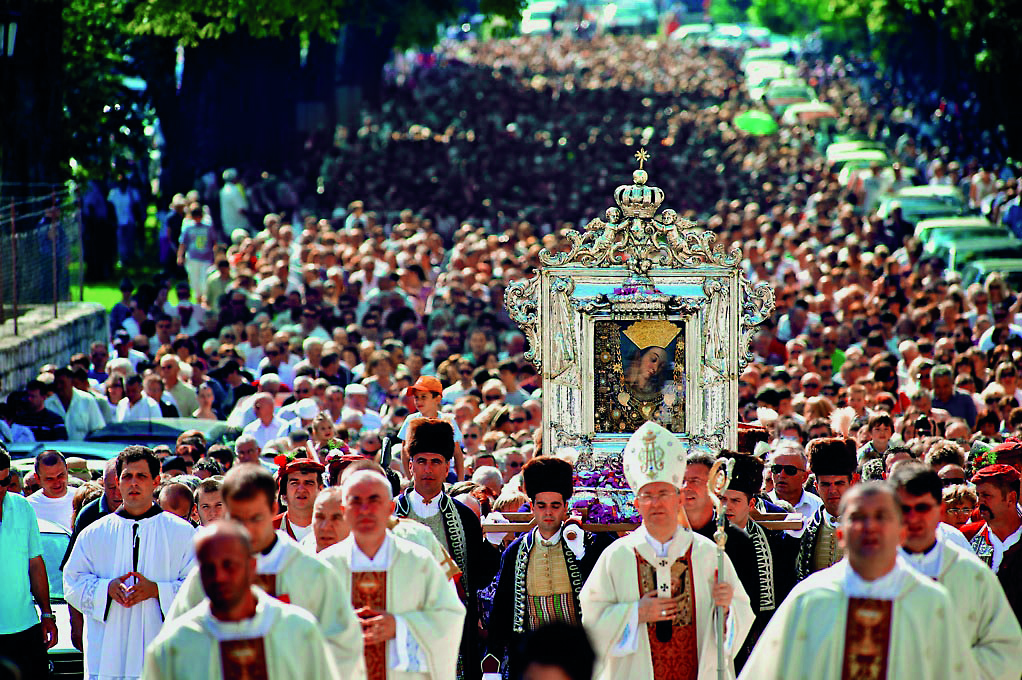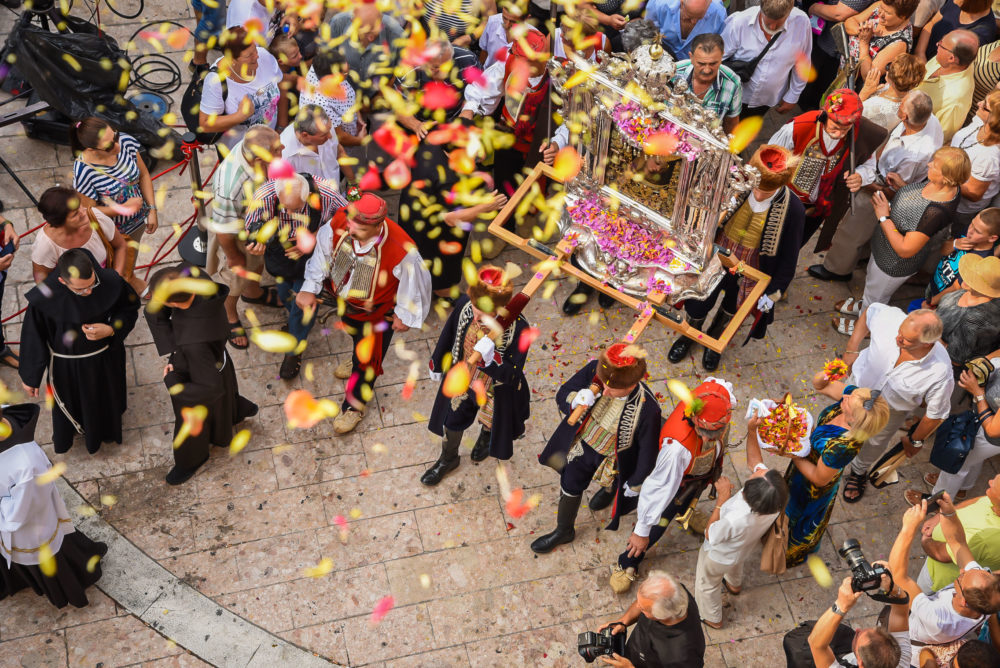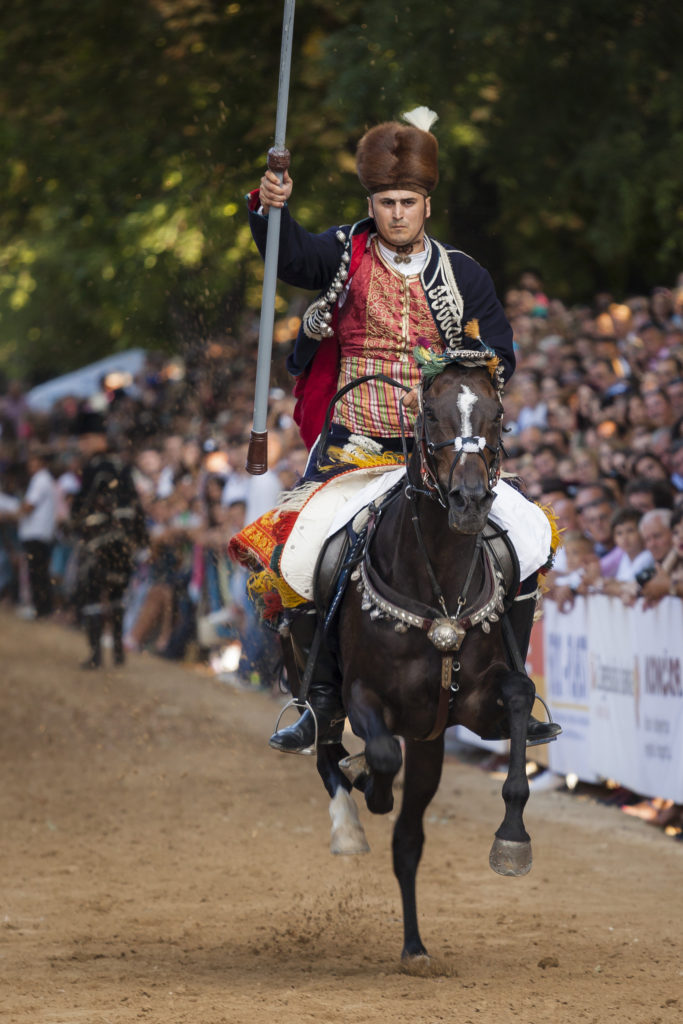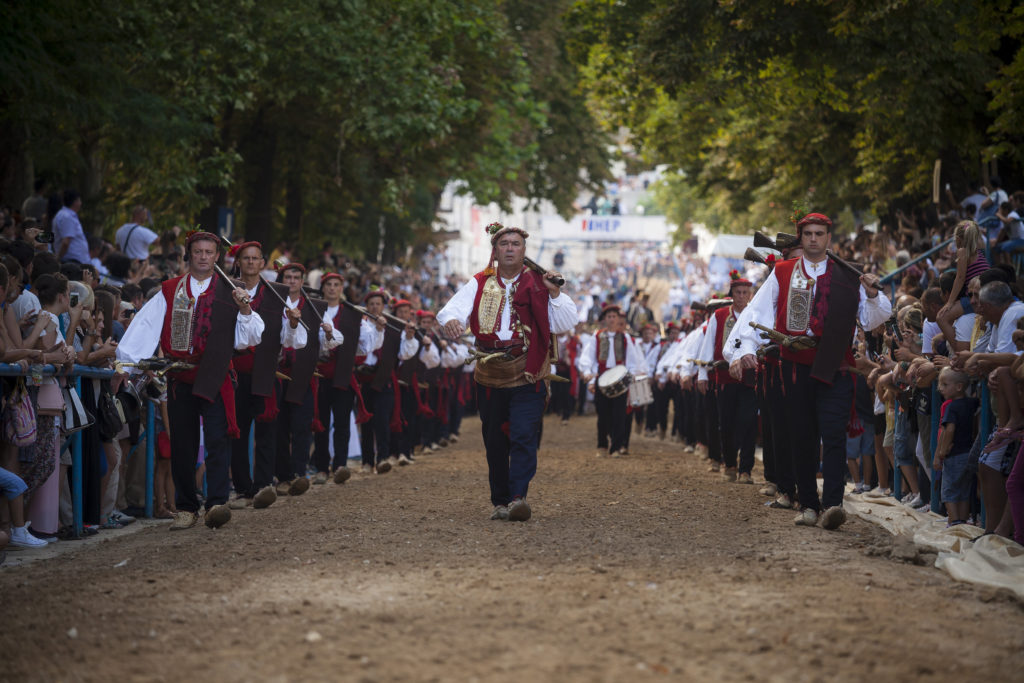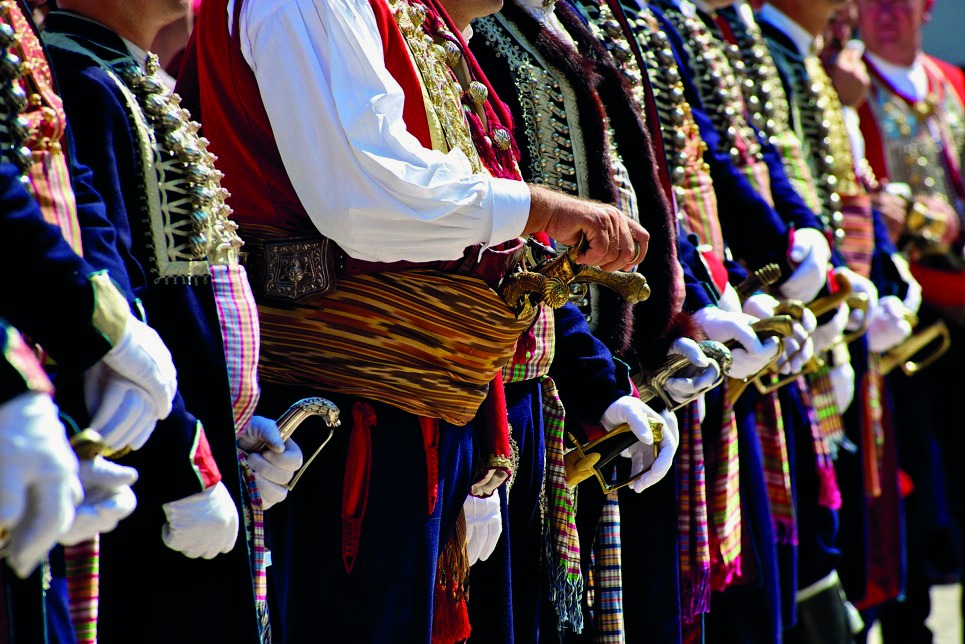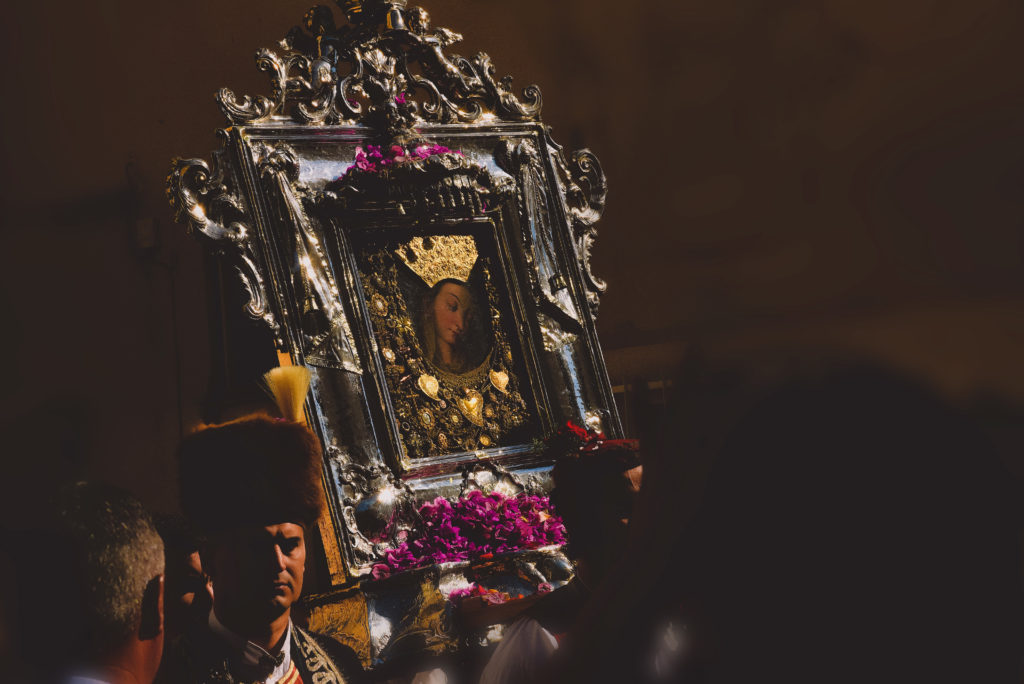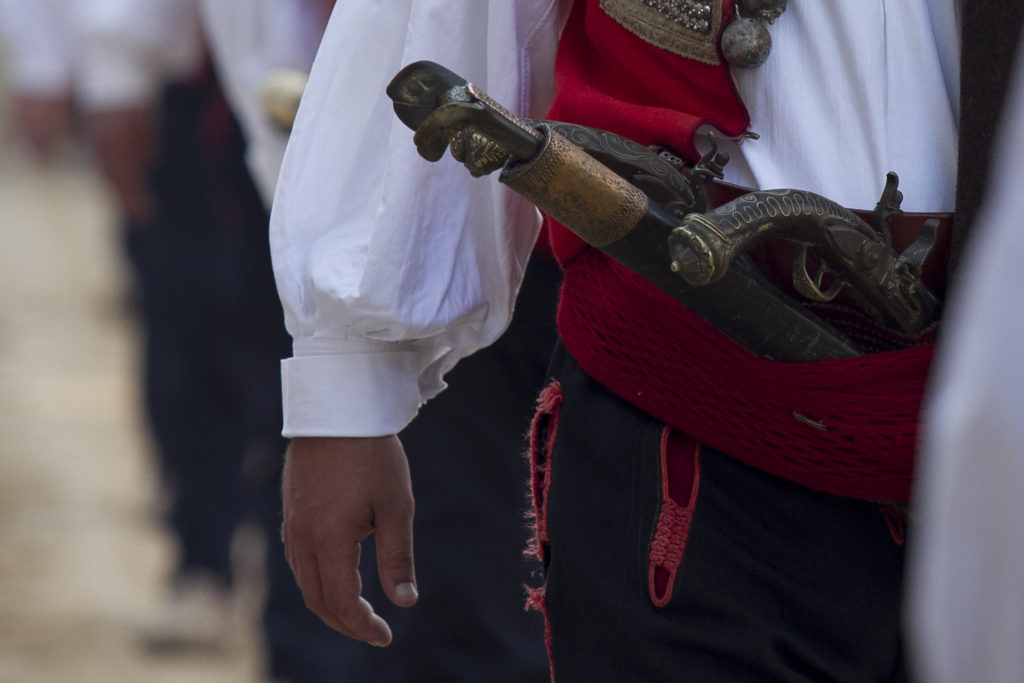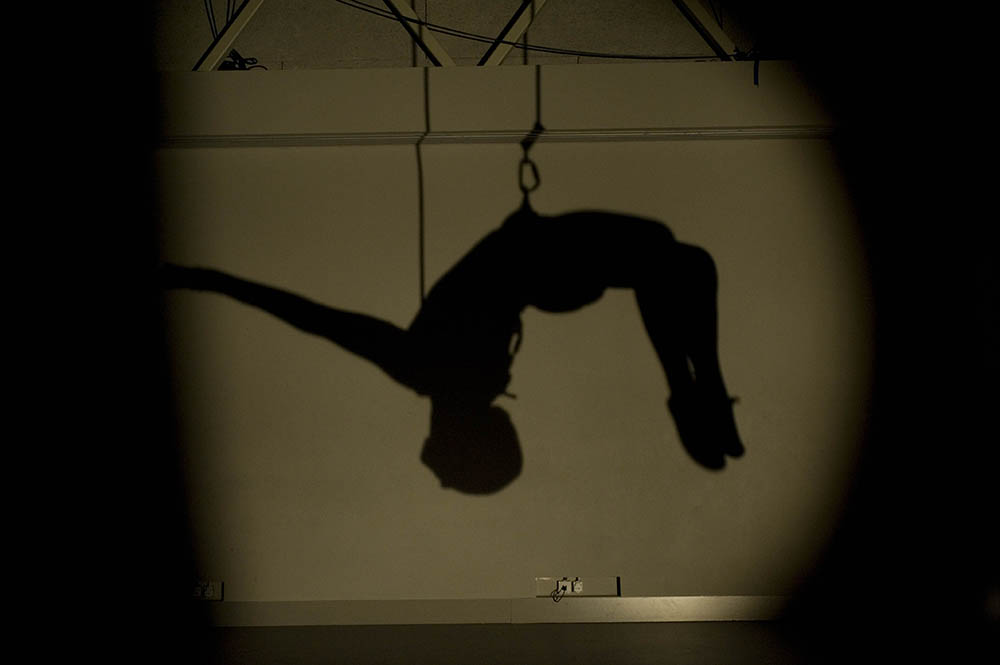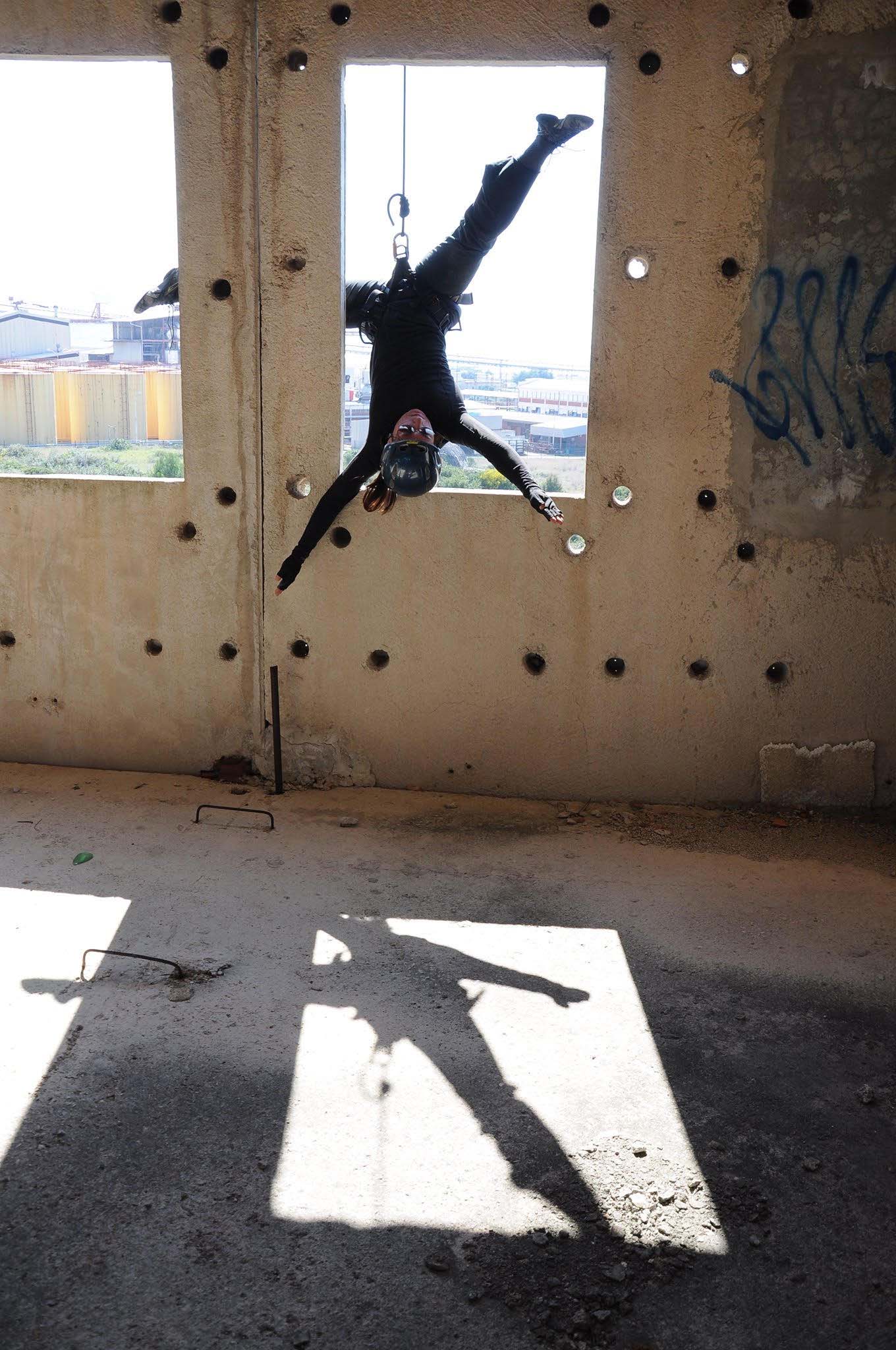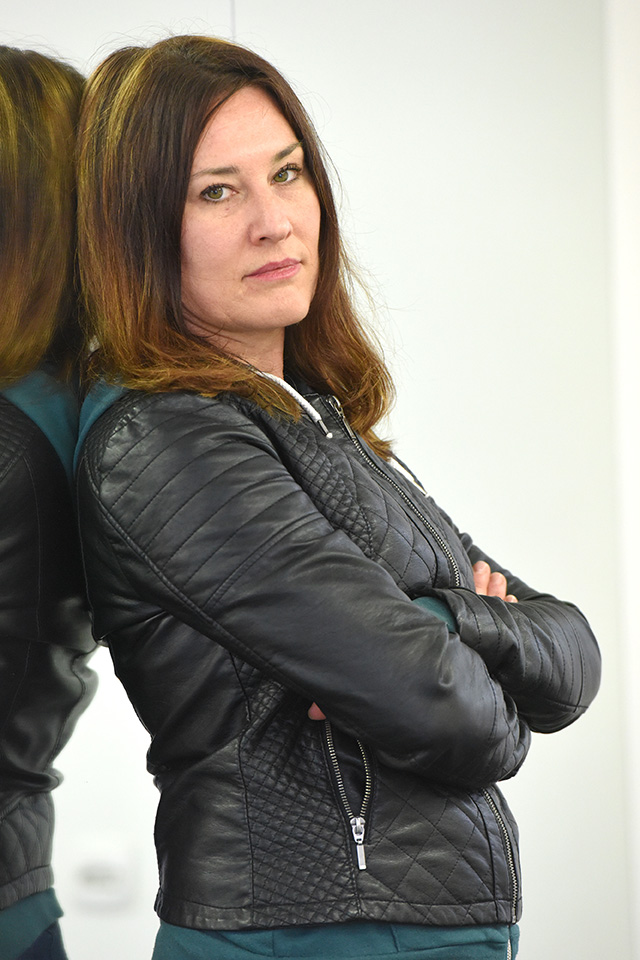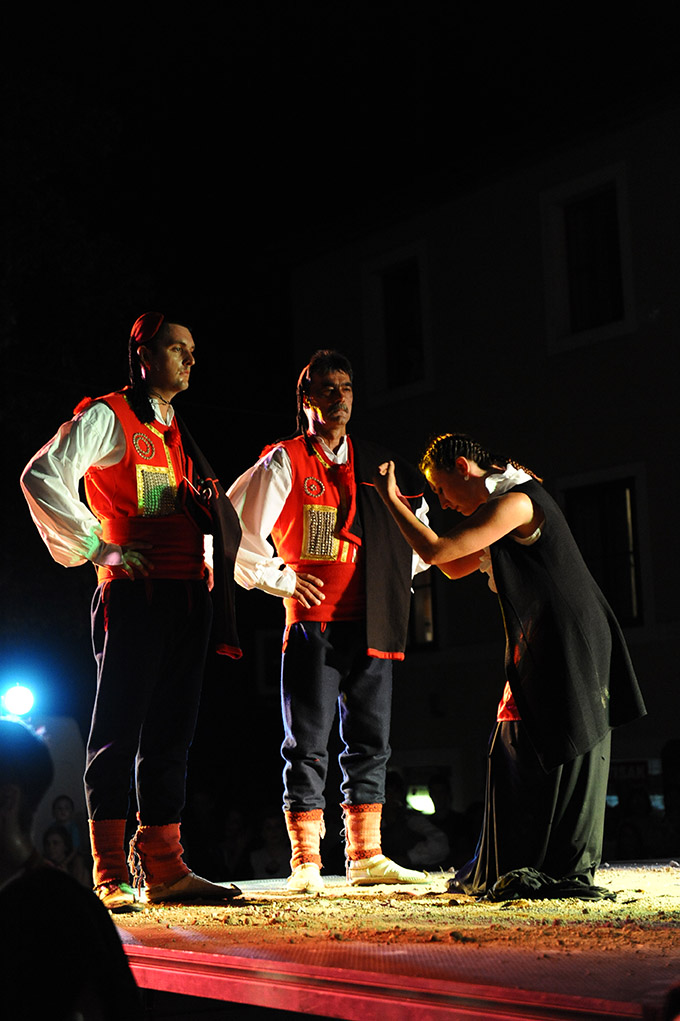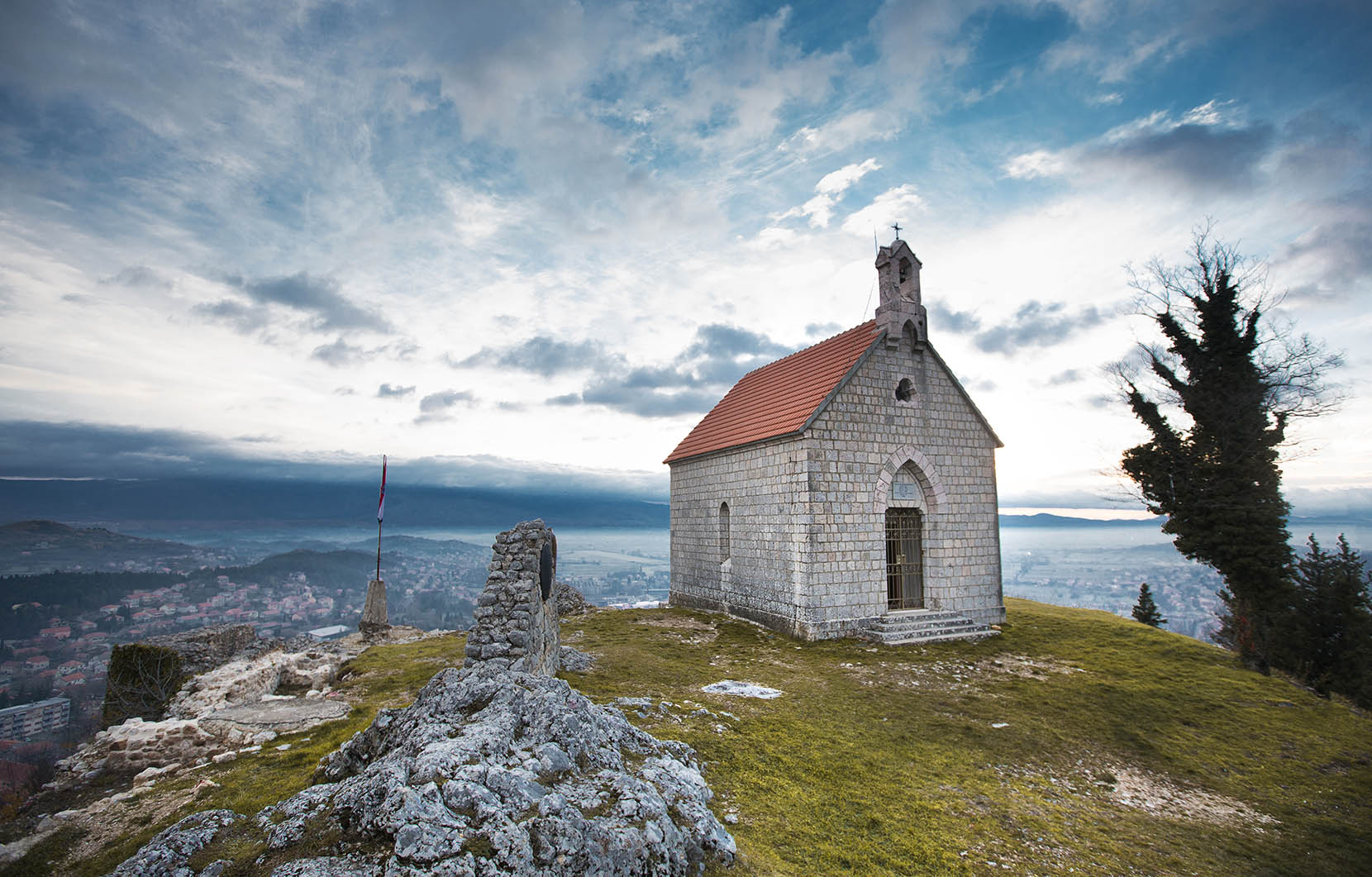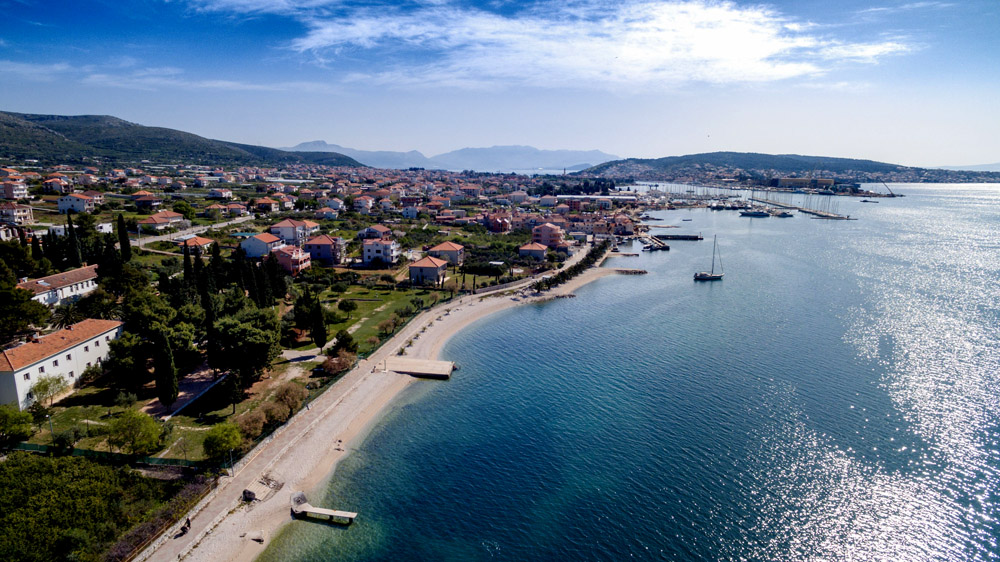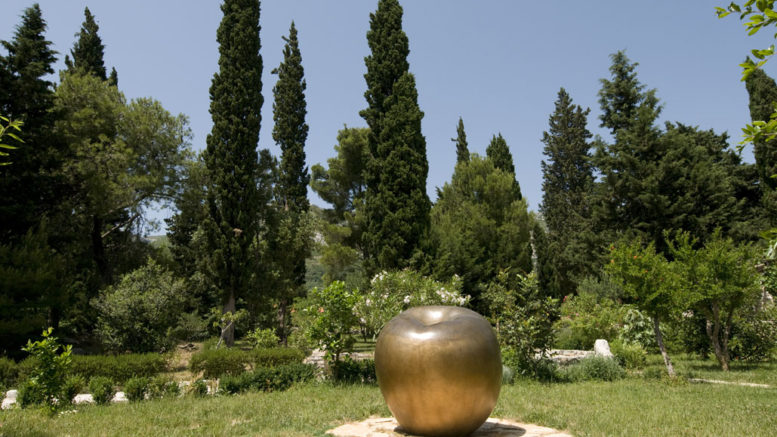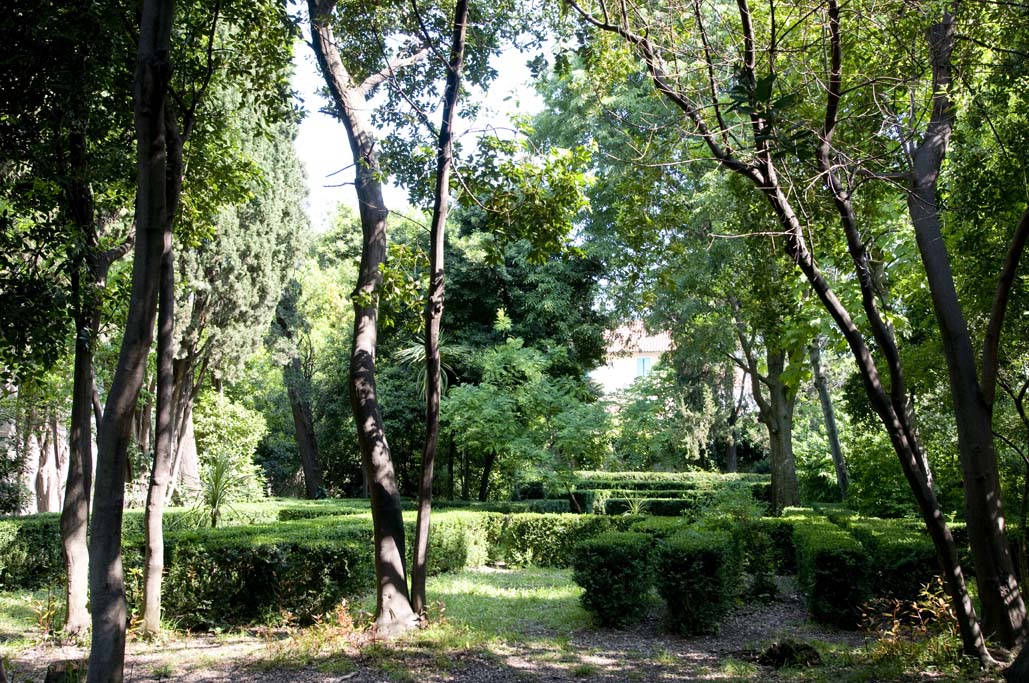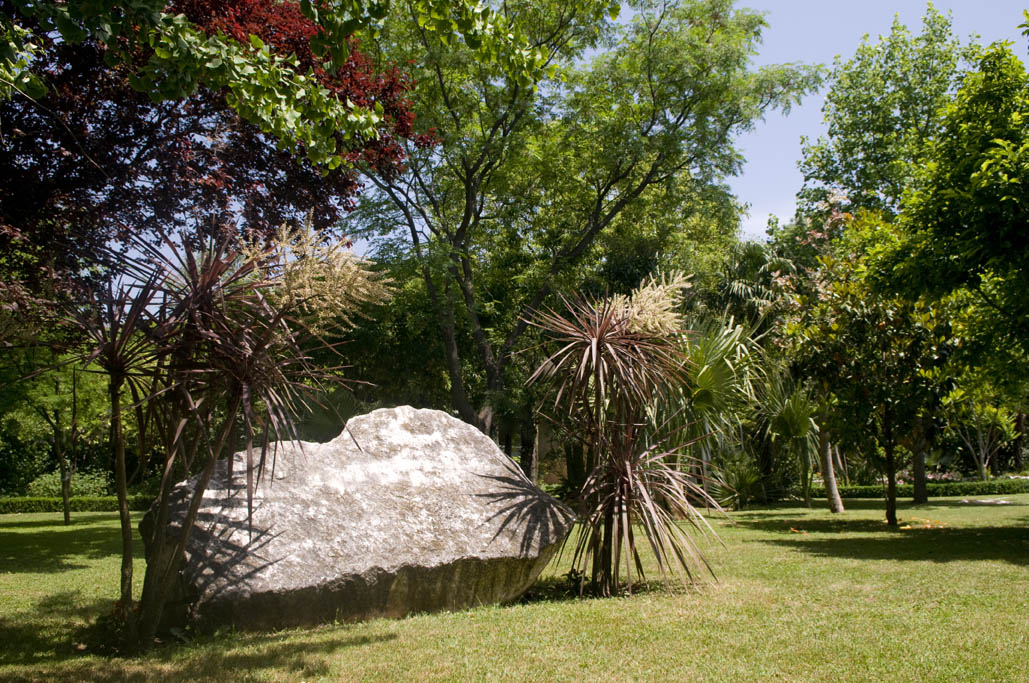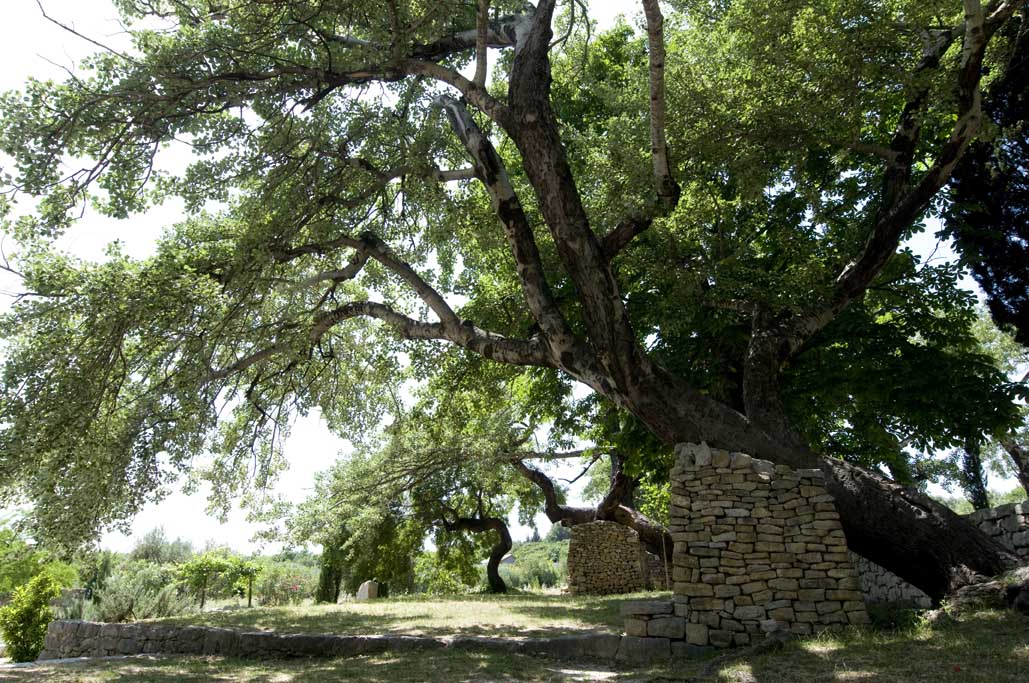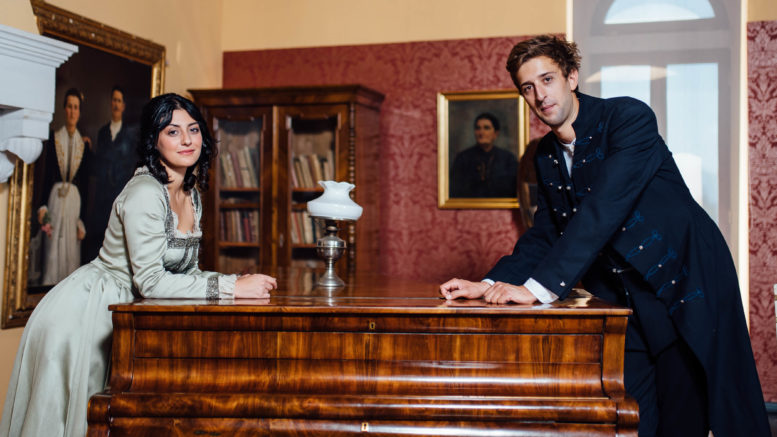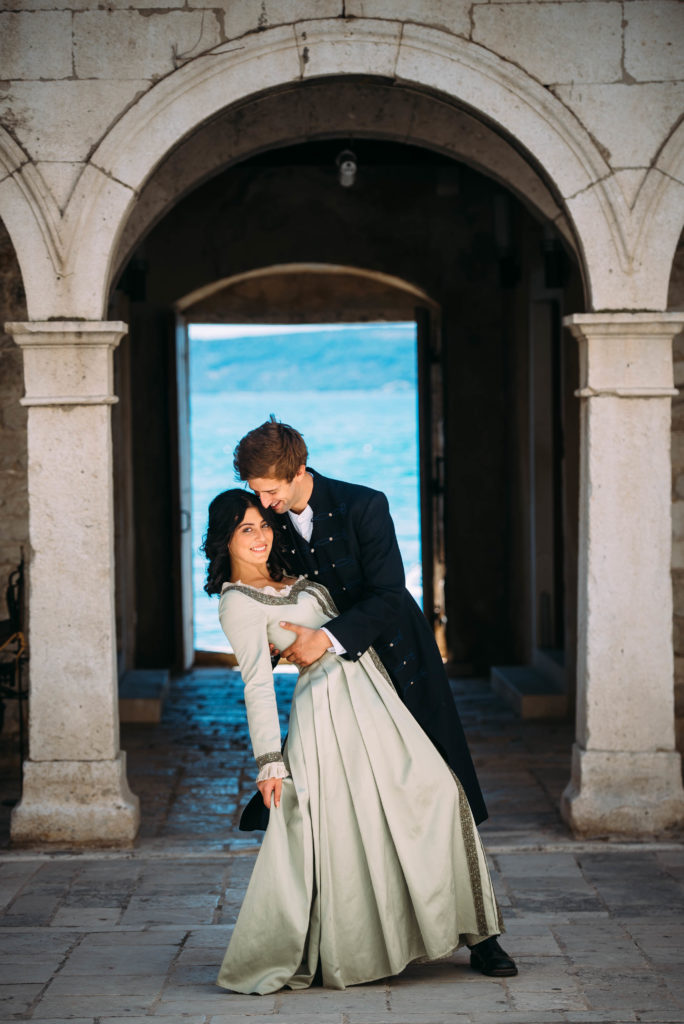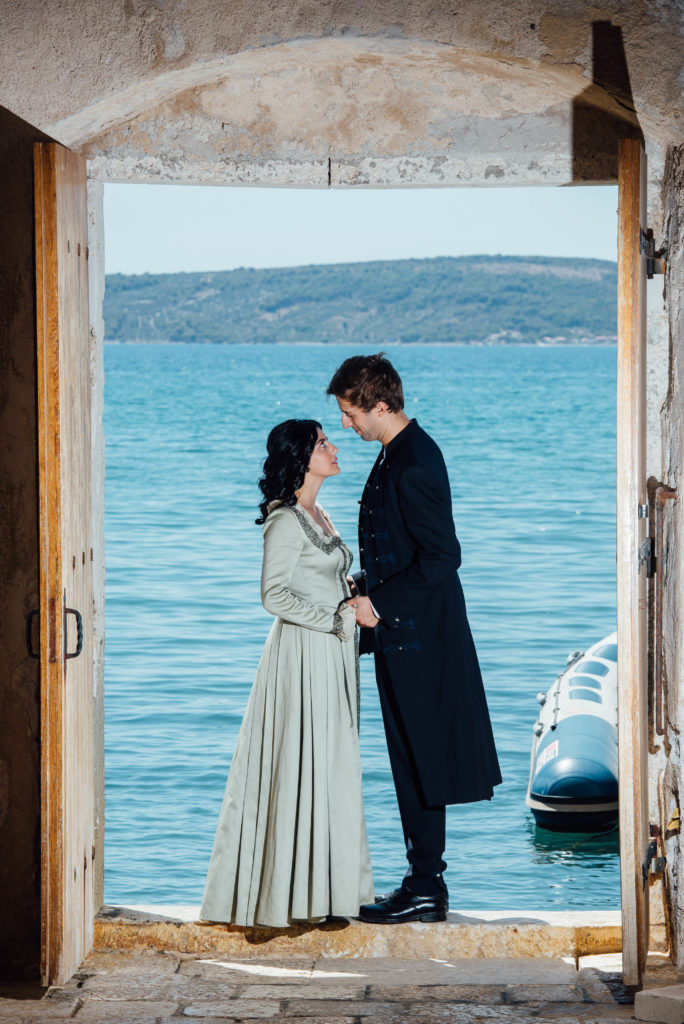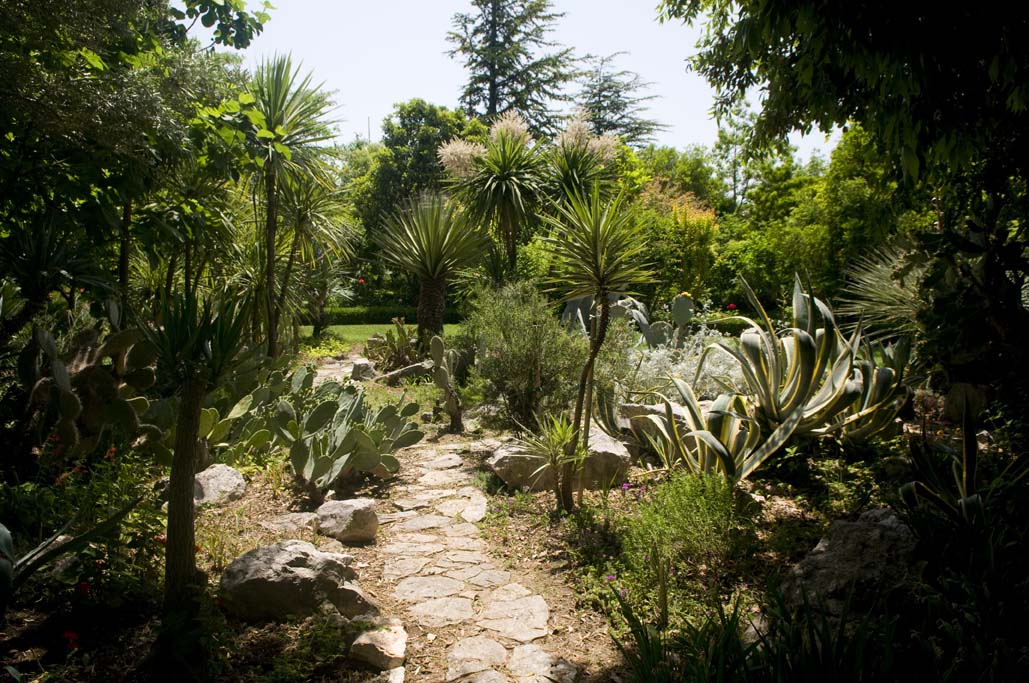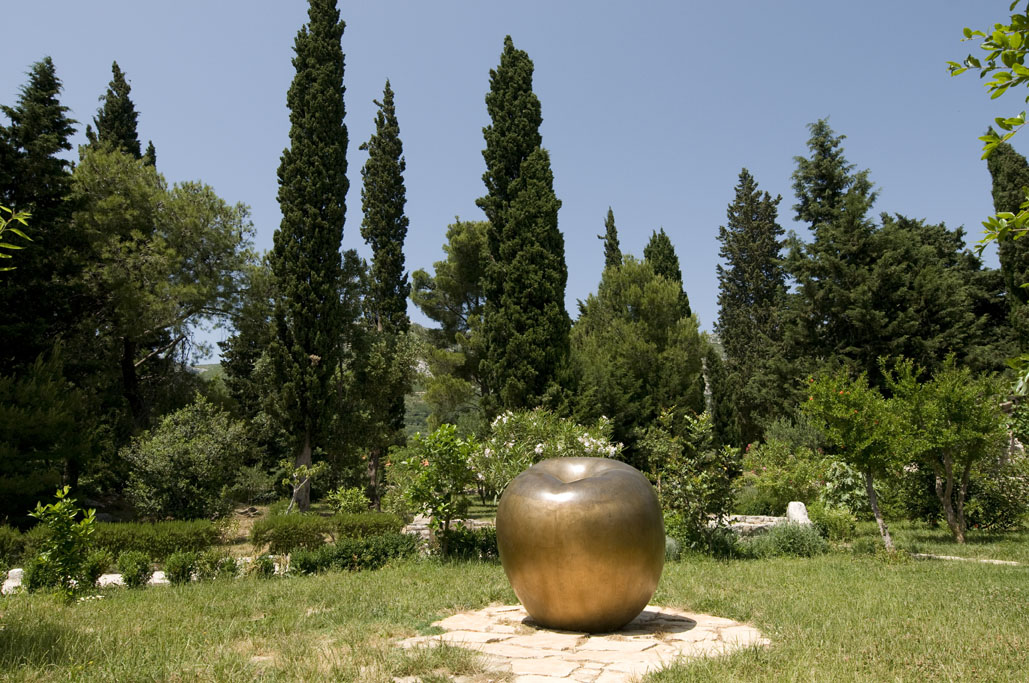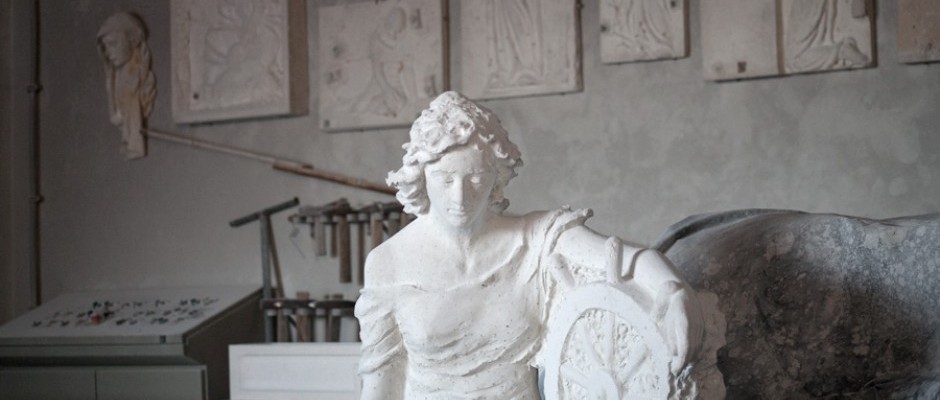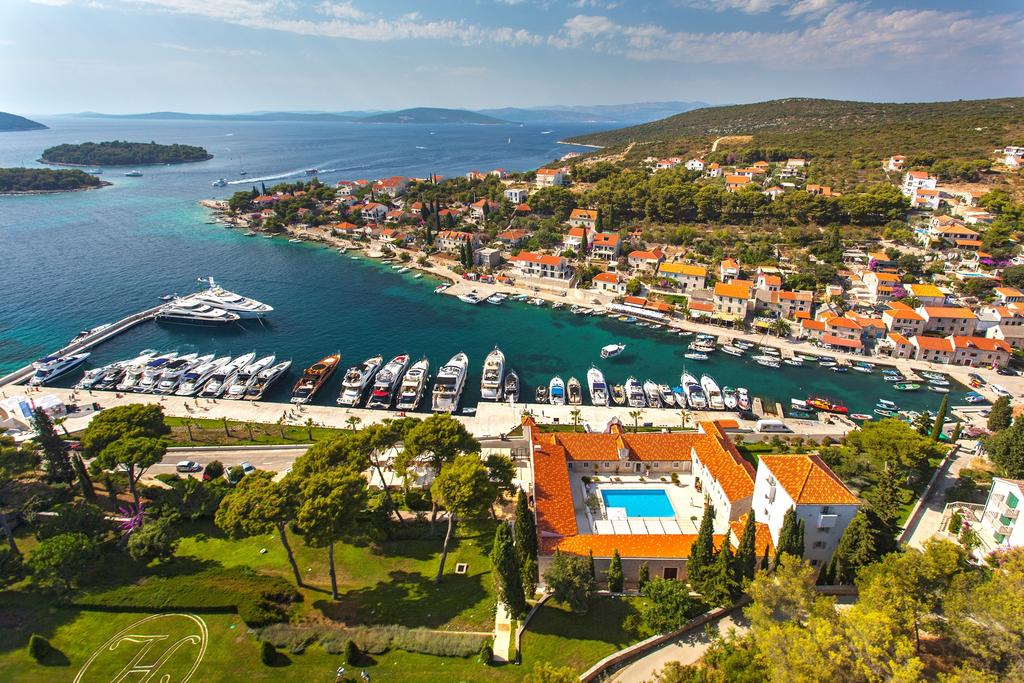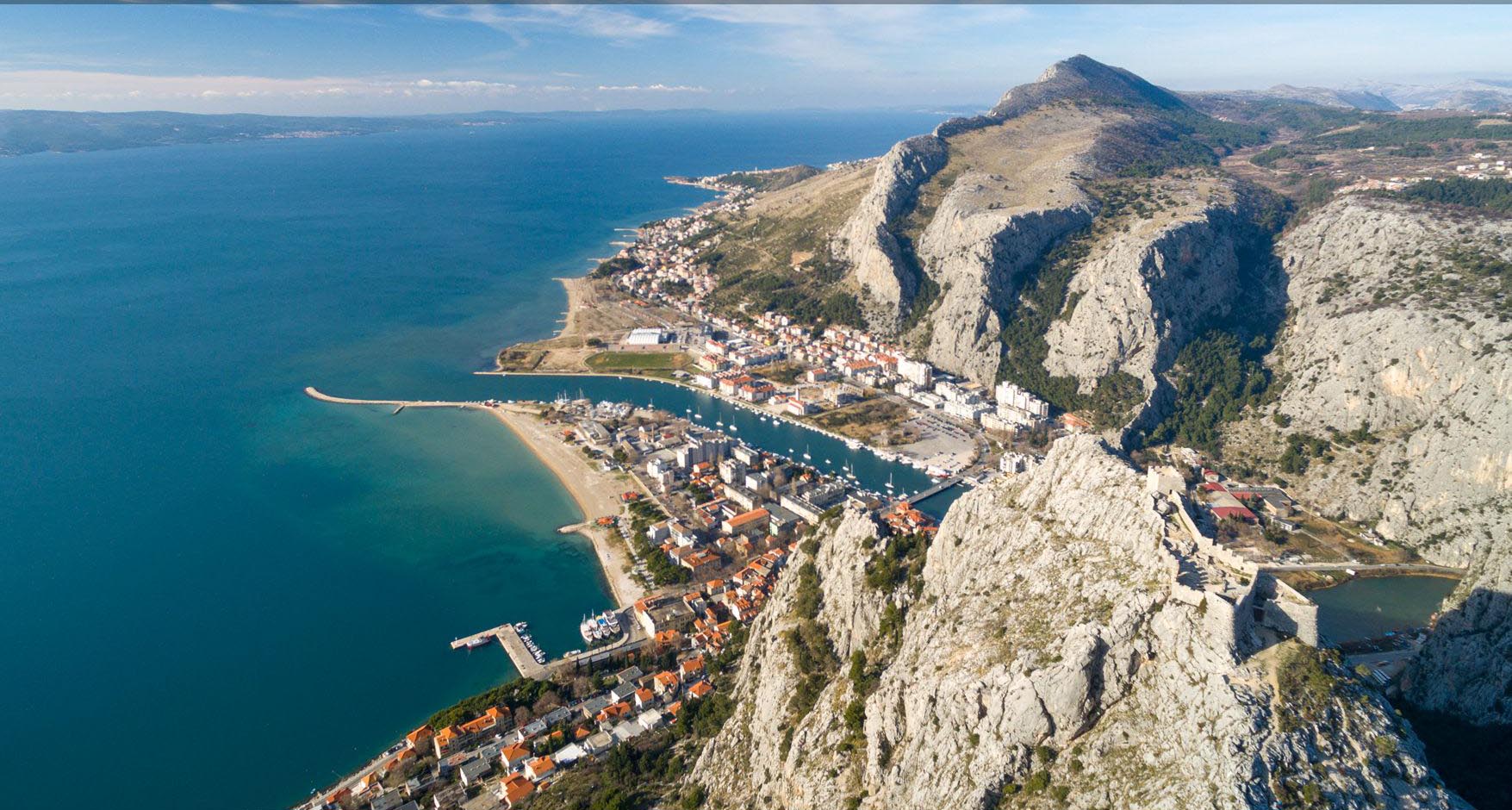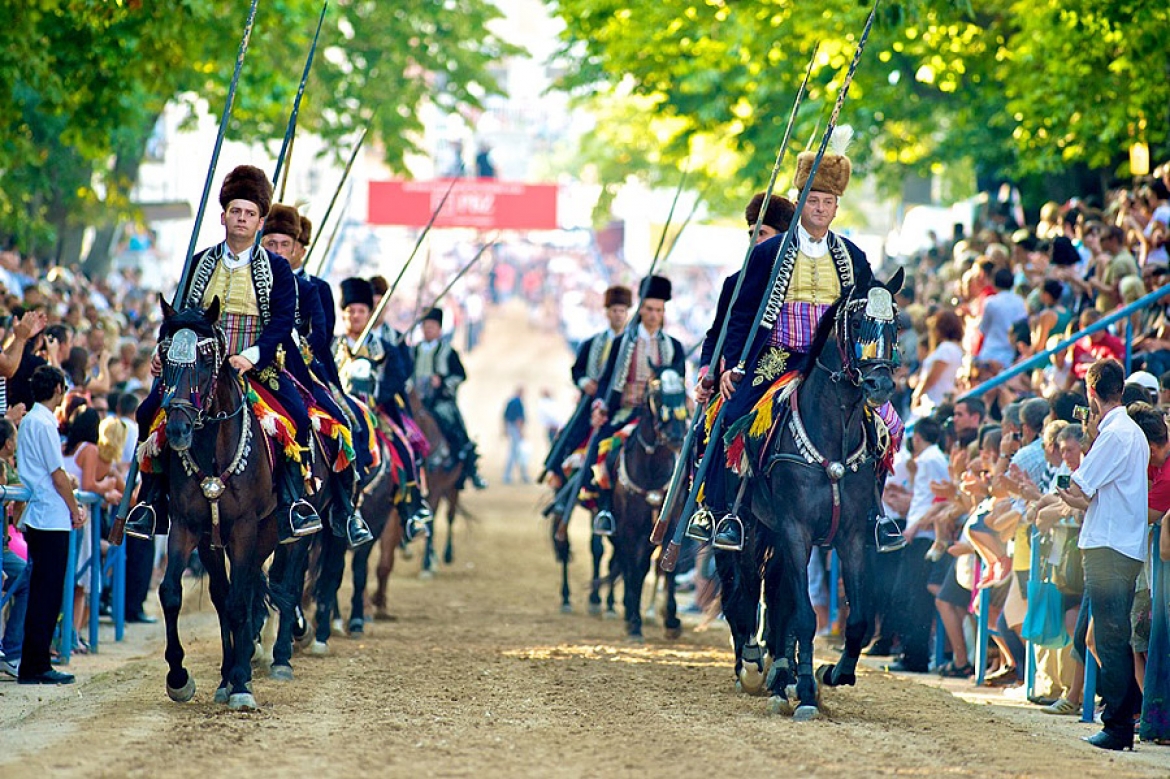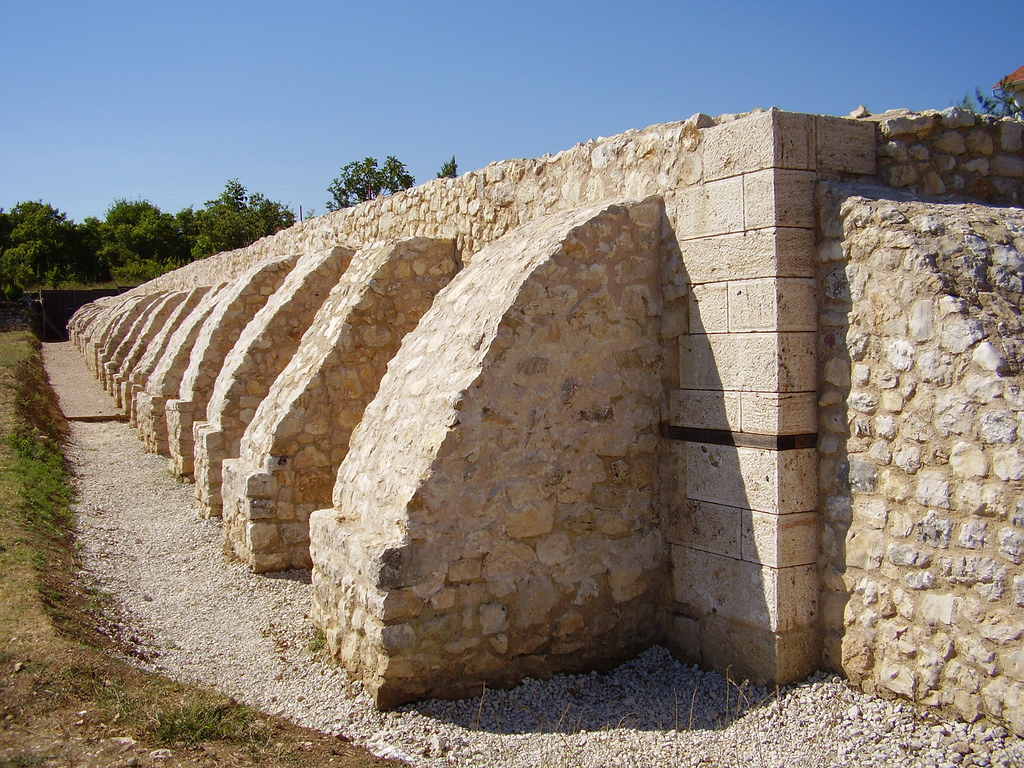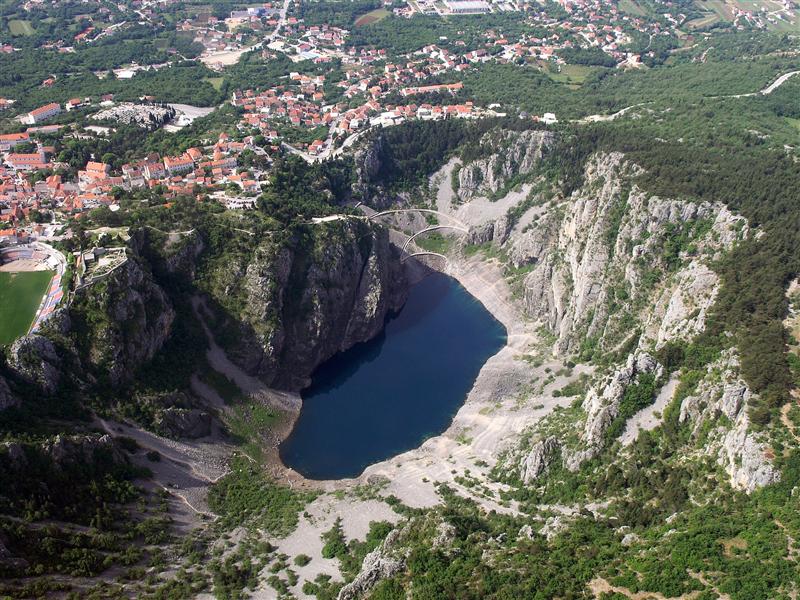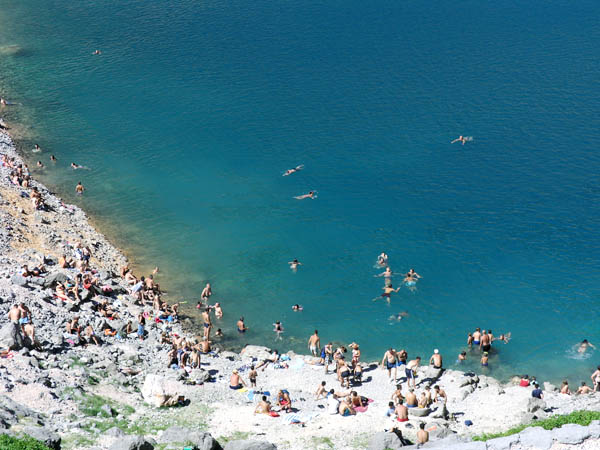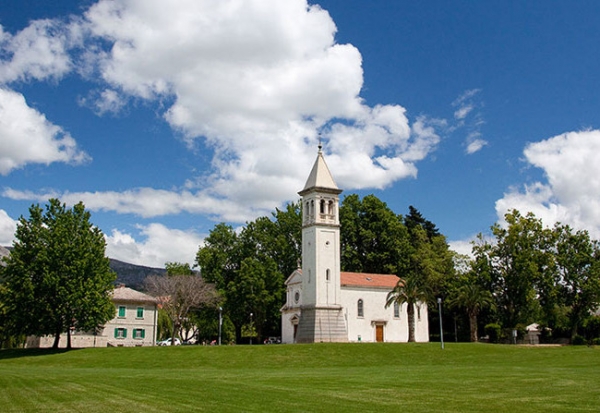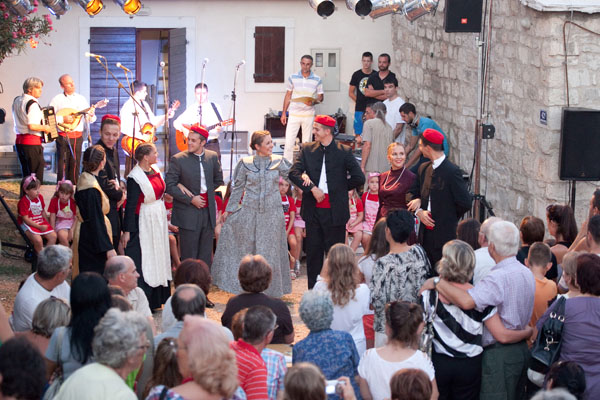Days of the Alka and the Assumption 2018
The residents of Sinj, as well as their dear guests and travellers will have an opportunity to enjoy in the exceptionally rich programme with a long tradition called the Days of the Alka and the Assumption 2018.
The town of Sinj, the Alka Knights Society, the Monastery of Our Lady of Sinj, the Sinj Tourist Board and numerous associations prepared a series of content and valuable events in which everyone can find something for themselves.
Cultural and entertainment events programme consists of diverse events that range from klapa and traditional singing concerts to classical music concerts, local bands concerts, numerous theatre performances and exhibitions and film projections.The magical ambiance of the town of Alka is the best stage. Do not miss the opportunity to watch the premiere of the Alkarska nevista play (The Alka’s Bride) performed by the Sinj Amateur Theatre or the play Opsada Sinja (The Siege of Sinj) as well as Klape Gospi Sinjskoj (Klape to Our Lady of Sinj Festival), traditional concert of spiritual songs devoted to Our Lady of Sinj.
You can taste and buy domestic eco product at the 9th Sinj Village Fair. A diva of world music – Dunja Knebl - with musical ensembles Kololira and Veja will perform under the starry sky on the Kamičak Fort.
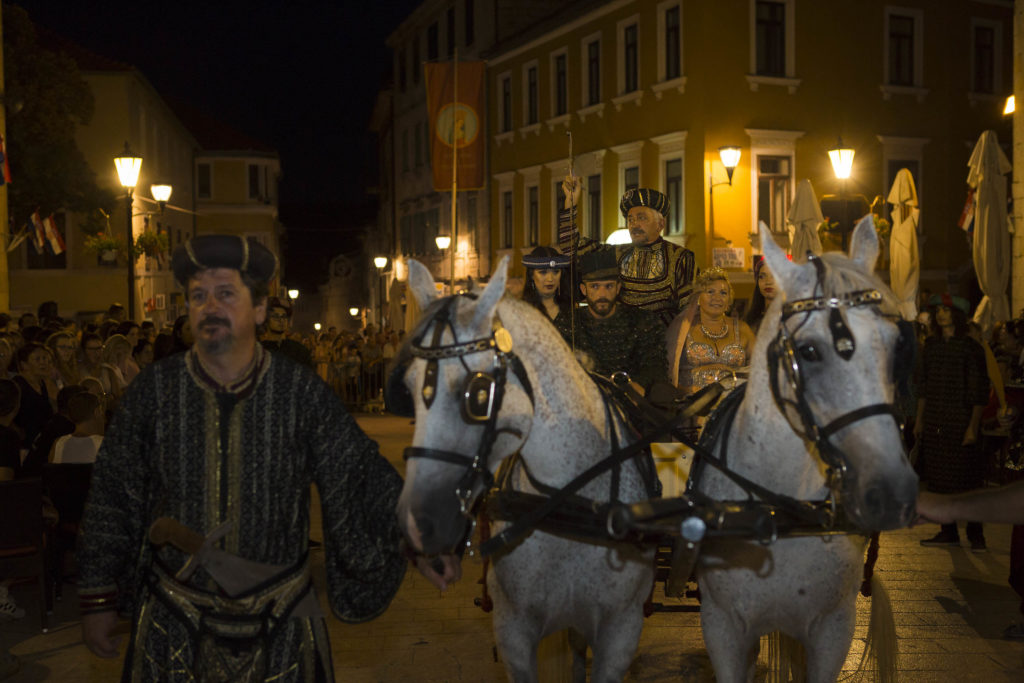
A healthy mind in the healthy body – many competitions and sports tournaments will be held during July and August. There will be football and mini football tournaments, basketball, bocca, handball and volleyball tournaments. Don’t forget that there will be a parachute tournament, sports fishing competition, dog exhibition and numerous other events.
The Alka festivities start on August 3 when the Bara takes place. The Alka knights will participate in the Čoja on Aug 4. On Sunday, August 4, the 303rd Alka will be held and the winner will get the Croatian tricolour. The town of Sinj will have an especially festive celebration because the Sinjska Alka coincides with the Day of Victory and the Homeland Thanksgiving Day as well as the Day of Croatian Defenders.
The Feast of the Assumption of the Blessed Virgin Mary will gather many believers as always. The votive Holly Masses for pilgrims will be celebrated in the Church of the Miraculous Madonna of Sinj, on the Old Town Fortress and in the Monastery courtyard. The Novena, Holy Rosary and Procession with the Painting of Our Lady of Sinj are special moments for every believer devoted to the Mother of God.
Photo: TB Sinj
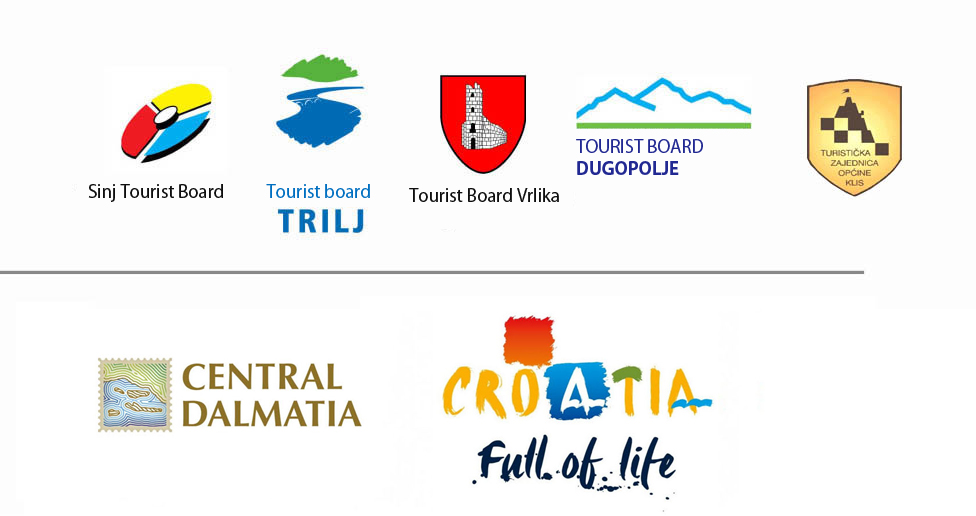
www.visitsinj.com
www.tz-trilj.hr
www.visitdugopolje.com
www.visitvrlika.com
www.tzo-klis.htnet.hr
Alka - dance of freedom
Spectacular blend of art, human skills and cultural heritage
Hot Sinj's summer brings numerous interesting events. In co-operation with Marija Šćekić, pioneer of vertical dance in Croatia, and artistic organization Histeria NOVA, project “Alka- dance of freedom” was designed. It is a spectacular blend of art, human skills and cultural heritage. Vertical dance is a very exciting and impressive form of modern dance in which artists - dancers perform in the air, with the support of a climbing rope.
Marija Šćekić is a winner of numerous significant international awards, and for years she has been cooperating with international artists, scientists and business partners.
She worked as a head of Department for contemporary dance on Art academy in Reykjavik on Iceland where she made contact with Italian choreographer Wanda Moretti and French choreographer Fabrice Guillot; there she became a part of international project Vertical Dance Forum co-financed by EU – programme Creative Europe.
She is a leader of her own project “Vrata Velebita” focused on preserving cultural-natural heritage of South Velebit and the Republic of Croatia. Art organization Histeria NOVA has been working for decades on exploration and promotion of contemporary dance as a unique blend of audio-visual and performative art.
With the reconstruction of walls of fort Grad in Sinj, the town joined association European Walled Towns that supports and is concerned with joint interests of fortified cities all around the Europe. “Alka – dance of freedom” will use south walls of the fort as its stage with 3D video mapping projection as a visual stage of the show. 3D video mapping is a new and exciting technique of projecting, which can turn almost every surface into dynamic video wall. It enables buildings to move, breathe, change their shape and even communicate.
Fort Grad lives in memory of Cetina region people as a place of mythical victory over by far superior Turkish enemy. In honour of the battle, even today after three centuries, in Sinj Alka – knight game is held. As a vow to Virgin Marry the Day of Our Great Lady is celebrated. According to the legend, she walked all dressed in white over the walls of the fort – and made the enemy retreat.
Thousands of people pilgrim in August to Sinj and pray to Miraculous Our Lady of Sinj.
The walls of Grad cherish till today famous history and eagerly watch over its town. “Alka – dance of freedom” will unite centuries old tradition of the locality and cultural heritage of Sinj and contemporary artistic move into unique audio-visual sensation.
Performance will be held on August 18.
The project has emerged within a greater project Sinj u sridu worth 68.114.000,00 kunas, of which 56.843.992,20 kunas are outright grants given by European Union.
Seget - 4 reasons to visit the most authentic part of the Mediterranean!
SEGET IS A TRUE MINI HEAVEN, and it proudly sits among the top 5 of the most frequently visited destinations in the Split-Dalmatia County. The fusion of the long tourism tradition and the irresistible charm of the small Dalmatian place is its formula for success – stay tuned and you will discover the motives of numerous travelers and the whole families to return there year after year!
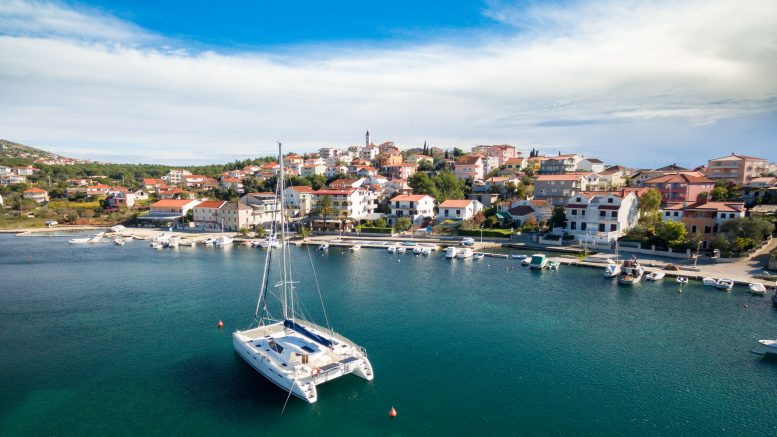
- A LOCATION TO DIE FOR! Did you know that Seget has a great traffic position? Much beloved national parks such as Krka and Plitvice Lakes, the Marian shrine of Medjugorje, and of course, UNESCO's jewels such as Split, Šibenik, Trogir and even Dubrovnik, are just a stone's throw away! Choose Seget for a peaceful oasis, and for even more content, go for a tailor-made excursion!
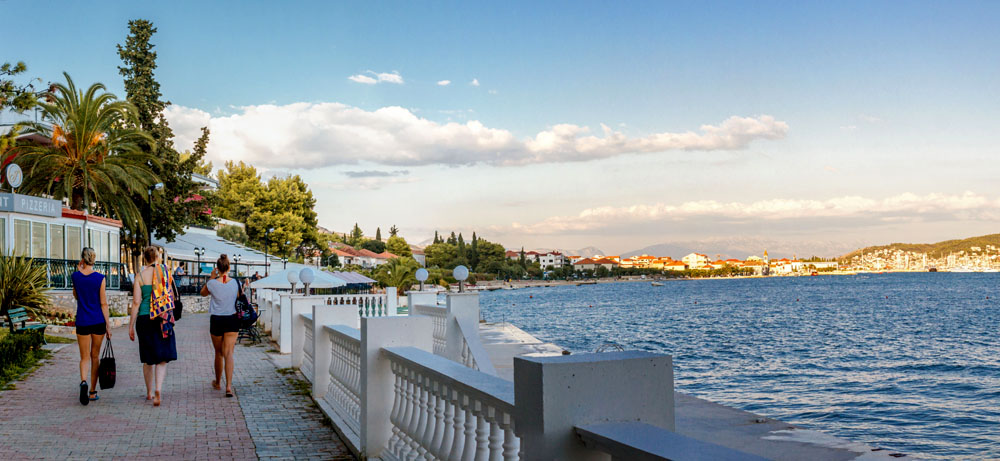
2. ACCOMMODATION EXPERIENCE YOU'VE ALWAYS WANTED. Friendly Seget hosts are well aware that the accommodation is an important segment of the tourist offer, and something that is constantly being upgraded.
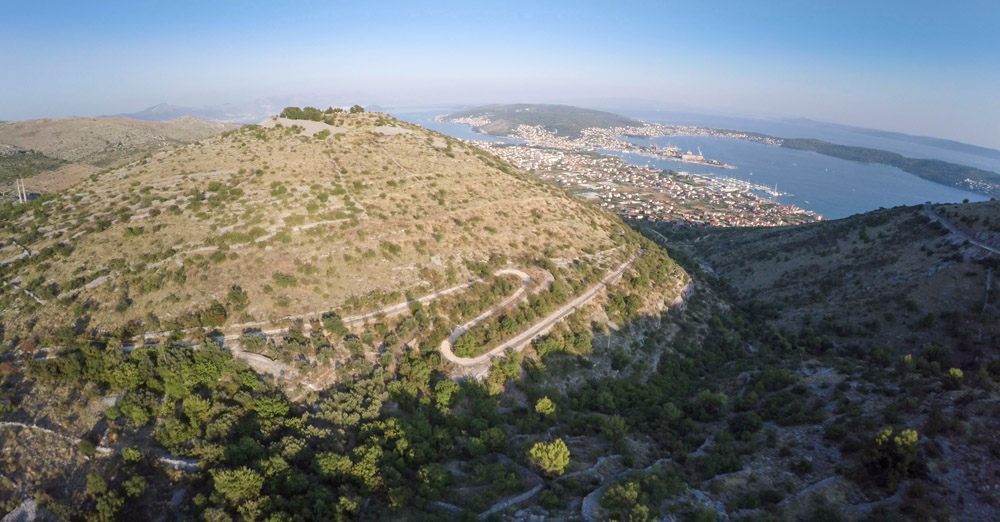
Everybody's favorite and well-known places such as campsites with 4 stars, hotels or apartments, don't lose their shine, but there are also some new sites to consider - hotels newly opened.

- TAILOR-MADE ACTIVE VACATION. You never give up your recreational and sports activities? Take the Staza zdravlja (Eng. Path of Health) and reward yourself with stunning views from the highest summits of Vlaška and Sv. Ilija (St. Elijah); and if you are in a really good shape, try to master Napoleon's Path (Cro. Napoleonov put) by bycicle – a road built in 1807 by Napoleon's marshals! For even more adrenaline activities, check out the nearby rafting and zip line on the Cetina river, which enjoy the cult status among active vacationers!
- A SPECTACLE FOR THE PALATE. Intriguing Dalmatian cuisine is a special experience for the senses, and Seget's restaurants which offers a star-studded menu! Try the legendary Dalmatian peka – a signature dish in the same time baked and cooked under an iron lid; grilled meat, vegetables or local fish, and round off your meal with magnificient homemade wine and delicious fried pastry – fritule and kroštule!
Seget Tourist board
www.tz-seget.hr
Photo: Tz Seget


Marvellous Gardens of Kaštela
The beauty of Kaštela has always attracted many tourists, as well as artists, poets and writers. One of them, the well-known Croatian poet Andrija Kačić Miošić, was especially attached to Kaštela, to which he dedicated a series of poems. In one of his famous verses – to paraphrase his words – he speaks of the seven settlements of Kaštela aligned like seven graciuos swans. The poet wanted to emphasize the beauty, sensuality, grace and sophistication of these little towns, just as the swans are.
The verse about "seven swans or seven Kaštela" is followed by the creation of their beautiful gardens, whose elegance is does not lose a spark in comparison to gardens decorated in French or English style. In seven Kaštela settlements, there are three such beautiful gardens and the fourth – a private one, curated by the Karanušić family from Kaštel Kambelovac, honored with many awards. If your desire is to enjoy natural beauty, peace and the singing of birds, make sure to include in your itinerary a visit to the gardens of Kaštela.
Historical architectural park – Vitturi Park
It was the first such example of park architecture in Kaštela, in the second half of the 18th century. The park was created by Radoš Micheli Vitturi, a nobleman from Kaštel Lukšić. Nowadays, this park is known as Vitturi Park and is located on the shore of Kaštel Lukšić, on an area of 7450 square meters. Vitturi Park was proclaimed a cultural monument in 1968, side by side with the famous Gučetić's Park in Trsteno, Garanjin's Park in Trogir and Borelli's Park in Sveti Filip i Jakov. Because of its characteristics, Vitturi Park is acclaimed as a rare monument of Croatian park architecture. While walking around its lanes, you will find lane frames of boxwood, old specimens of cypresses, alpine pine and laurel pines. There are also various exotic trees like firmiana, from the cocoa family, and scented calicantus.
Botanical Garden of Ostrog Elementary School
In 1976, when the elementary school in Kaštel Lukšić moved to a new building, the rearrangement of the completely neglected school ground area began. On four acres of land surrounding the school, there are more than 1,400 varieties of plants that come from all over the world, but mostly from the Mediterranean zone. The largest part of the botanical garden is occupied by an arboretum, built in the landscape style of an English garden. In the southern part of the garden, there are groups of authentic and exotic trees, bushes, perennials and flowering plants, but the special attention of the visitors is often attracted by aromatic and medicinal herbs. The botanical garden was built according to the English-French principle, so its northern part hosts the so-called "small park“, with completely symmetrical lines. In that zone, there is also a stone stage, where various cultural and artistic events take place. The integral part of the botanical garden is an olive grove, with 170 olive trees. Its variety of 45 domestic and foreign olive trees represents one of the largest collector's plantation on the Croatian part of the Adriatic.
Biblical Garden Stomorija - Shrine of Our Lady of Stomorija
The historical site of Our Lady of Stomorija, i.e. the church of St. Mary on the slopes of Kozjak, today hosts the Biblical Garden. For centuries, it has been growing trees, olives, grape vines, figs and plants mentioned in the Bible. Over the years, people have addeed some other plants such as juniper trees, laurels, acacia, as well as spicy and fragrant herbs. At the entrance to the Biblical Garden, there is the Memorial stone, opposite which stands the olive tree of Pope John Paul II, blessed personally by His Holiness in 1998, during his visit to Split. In the terrace part of a garden, called Jidro, there is a Monumental lane of stone megaliths, under the shades of the ancient olive trees, tributing numerous belated Croatian dignitaries. From the panoramic point in the Biblical Garden, there is a beautiful view of the field and bay of Kaštela, along with a small vineyard, planted in memory of all the hard working peasants and the grape itself. This small vineyard features as well the ʺKaštela crljenakʺ - an authentic sort, known also as Zinfandel.
"The Paradise Garden" of Karanušić family from Kaštel Kambelovac
Next to the Karanušić family house in Kaštel Kambelovac, there are more than 300 different plants growing and forming "The Paradise Garden". It contains a series of tropical and subtropical plants, about 50 species of palm trees, 10 species of aloes, as well as other plants which grow in Dalmatia. For their beautiful garden, the spouses Katarina and Ante Karanušić received a number of awards. Along with savouring the scents of these magnificent plants, you can hear birds singing and frogs and turtles chatting, all of which will make you feel the true charm of this piece of paradise on Earth.
Visit all these beautiful gardens and make the most of the possibility to meditate there or enjoy in the healing sounds of nature, as this is the only way to experience the ture history of these garden's past.
Photo: Kaštela Tourist Board
Visit Kaštela Tourist Board's Facebook page and stay up to date with all the latest news!

Creative Spring in Kaštela – Enjoy in 7 Weeks of Spring Festivities!
Seven places, one connection – an event called Creative Spring, ongoing till the end of May. Of course, it is all about Kaštela, picturesque settlements which form the town of Kaštela and are located in the bay of Kaštela, between Split and Trogir. The history of Kaštel Štafilić, Kaštel Stari, Kastel Novi, Kaštel Lukšić, Kaštel Kambelovac, Kaštel Gomilica and Kaštel Sućurac date back to the Neanderthal Age. Most important reminders of the long history of living in this area are numerous ancient villas, old Croatian churches and castles – ʺkašteliʺ.

One of the most beautiful love stories, including a Croatian Romeo & Juliet, was told in Kaštela - a story about the unfortunate love of two young people - Miljenko and Dobrila. Kaštela are also known for its old, original wine sort – ʺcrljenak kaštelanskiʺ, a predecessor of the world famous Zinfandel.
To attract a larger number of tourists in springtime to these colorful places, the town of Kaštela and the Kaštela Tourist Board, in cooperation with other institutions, organized the tourist&cultural event Creative Spring in Kaštela. These 7 weeks of the event will include the week of ʺcrljenak kaštelanskiʺ, week of Kaštela Castles, week of Kaštela's dialect, week of Kaštel The Small – 7 days dedicated to children's creativity, Kaštela's flower festivities, Gastronomic Kaštela or Horse bean Week and week of Roads through Kaštela. The event covers all important segments - from history and culture to sport tourism and enogastronomy.
The love story about Miljenko and Dobrila is fused into all weekly events.
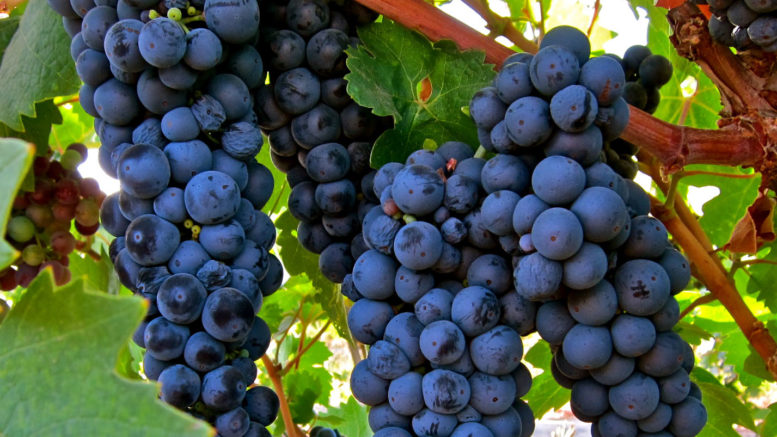
Week 1 – dedicated to ʺcrljenak kaštelanskiʺ
In springtime, Kaštela are particularly appealing to the visitors, and already in the first week of the Creative Spring in Kaštela, at the opening ceremony organized by the town of Kaštela on April 9th 2018, Kaštel Sućurac, residents of Kaštela and surrounding towns, as well as all their guests, were able to get information on the history of crljenak kaštelanski and taste this exquisite red wine, produced by several winemakers from Kaštela. Besides fine wine, ancient traditional dishes were available for tasting, provided and prepared by hard working students and teachers of Braća Radić High School.
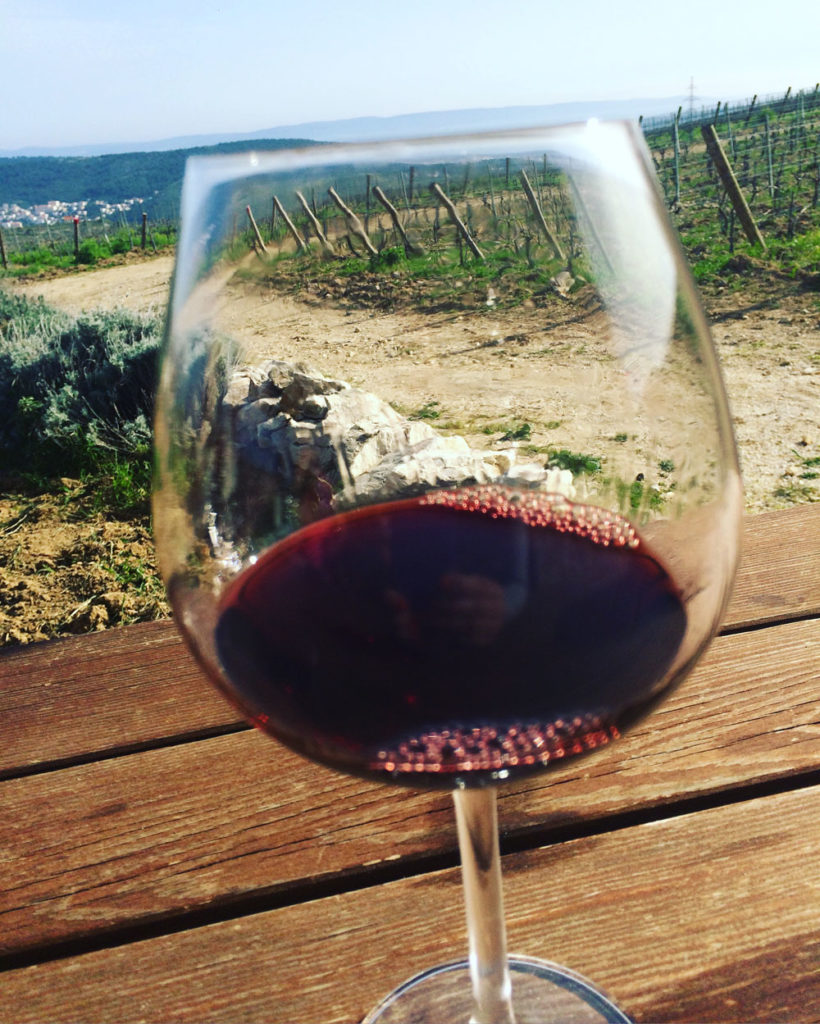
A roundtable on crljenak kaštelanski was held on April 12th, 2018 at the castle Vitturi.
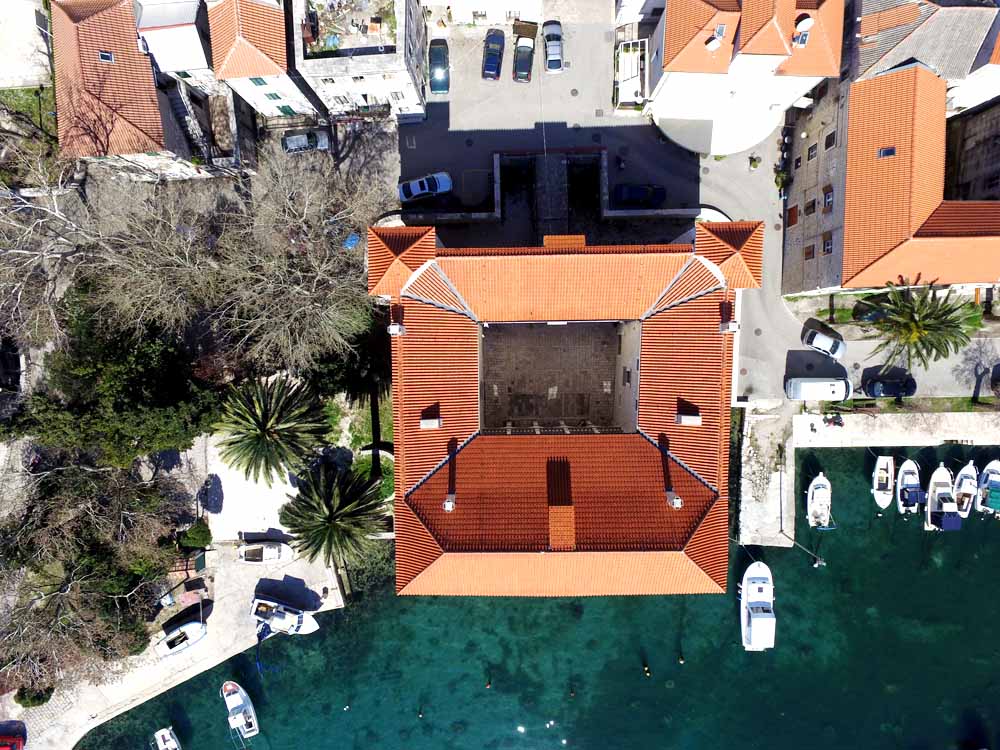
Week 2 – Kaštela's ʺkašteliʺ
The second week of Creative Spring is reserved for Kaštela's castles or, in the local dialect, ʺkašteliʺ, because cultural heritage is an important segment of the tourist offer. All lectures are open to the public, and the organizers have extended invitations to owners of travel agencies, local guides and journalists. Lectures on "Kaštela's Castles“ and "Kašteli before Kaštela" will be held on April 17th and 18th in Vitturi castle in Kaštel Lukšić. The "Kaštela Heritage" is the topic of the lecture which will be presented on April 20th and will take place in Podvorje, Kaštel Sućurac, after which a boat tour of Kaštela is on the program.
Week 3 – Kaštela's dialect
The lyrical souls and all those who appreciate beautiful songs, elegant words and performances will enjoy the third week of Creative Spring. On April 23rd, at 7:30 pm, in Podvorje, an event called Night of Book Lovers will kick off with a stand up comedy "Dalmatinka", created by Marijana Perinić. Later in the evening, at 09:00 pm, you can join a danceathon called COOLturni plesnjak, also in Podvorje. Two days later, on April 25th, at the castle Vitturi, there will be a presentation of the book "Trogirski vojvoda" (The Duke of Trogir), translated by a famous Croatian poet, Luko Paljetak. On April 26th, at 7:30 pm, in St. Juraj's cinema in Kaštel Sućurac, the 27th dialectal poet's evening ʺČA bih da jubavi ni“ (What would we do without love), is on schedule.

Week 4 – Festival of children's creativity
Intended for children and their creative expression, the 4th week includes an eco-action "Lipa li su lipa moja Kaštela" (Oh my fair Kaštela). As part of the Kaštel The Small project, a children's creativity festival will be held, followed by a quiz for children on the topic of the famous Kaštela's Romeo & Juliet – Miljenko and Dobrila, festival of children's folklore groups, and a performance of Little Red Riding Hood.
Week 5 - 18th Flower Festivities in Kaštela, dedicated to Miljenko & Dobrila
Kaštel The Small continues with projects in this week as well, with more performances. In addition to children's performances, gorgeous flowers mark the fifth week of the event, which is dedicated to Kaštela's flower festivities. The opening of the 18th Kaštela's Flower Festivities is programed on May 11th, at the Vitturi castle. The Flower Festivities will be open from May 11th to May 13th 2018. This year's main theme are Miljenko & Dobrila.
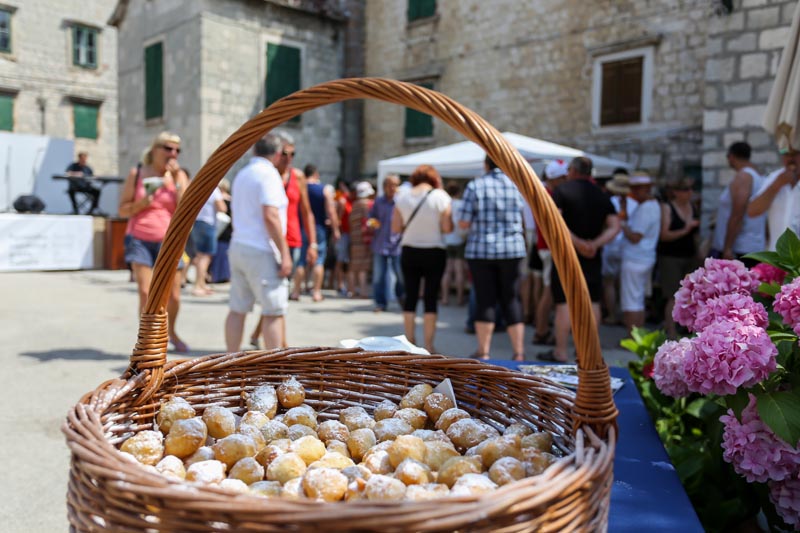
Week 6 - Gastro Kaštela – All about horse beans
Gastro-fans and all those who simply love good food, will enjoy the week of Gastronomic Kaštela, which will include presentations of books written about traditional local food - "Manistra and Bob" and "Bob, bobić, mahuna". During this week, th economic forum of Split-Dalmatia County will be held at the Vitturi castle. On Saturday, May 19th, at the Fraternity House in Kaštel Kambelovac, a special event will be hosted – a World Cup in preparation of dishes with cuttlefish & horse beans, and a day later, on May 20th – the Feast of Horse beans.
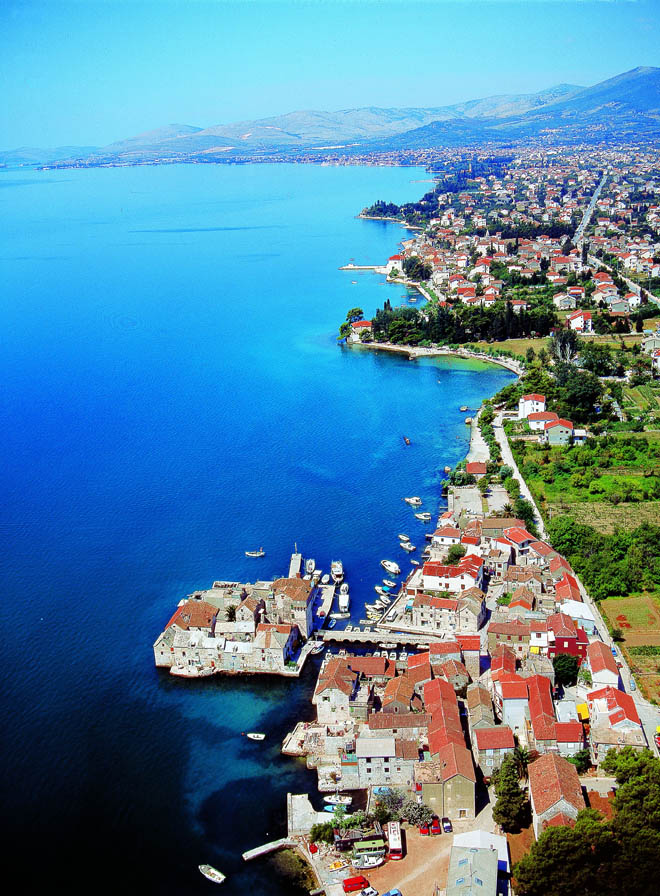
Week 7 – Roads through Kaštela
The last week of the Creative Spring Festival is all about romance – discovering the roads through Kaštela. On May 28th, for all of those who are in love, have been, and will be, a lovely poetry reading is on schedule - "Romantic Letters to Miljenko and Dobrila". Both recreative sports people as well as professional athletes will get their own share of excitement - on May 26th they will go cycling on a Ciklo journey through the history of Kaštela with Biking club ʺOlujaʺ. That same day, May 26th, will mark the closure of Creative Spring in Vitturi castle. But they have saved some more activities for the very end! To keep you in good shape, club ʺHPD Bedalovʺ invites all visitors and tourists on Sunday, May 27th, to a walking tour through Kaštela. A warm welcome to all of you!
Photo: Kaštela Tourist Board
Visit Kaštela Tourist Board's Facebook page and keep up to date with all the latest news!

Brač’s stone - jewel of Brač, famous worldwide
On Brač the man and the stone live and create together since ever. For people on Brač stone is a true jewel. They take it out as the most precious treasure. From this treasure – white stone - some of the most colossal monuments have been created, like Diocletian’s palace in Split and many churches and palaces throughout Dalmatia. But, Brač’s stone is famous worldwide as well. It was used in decorating vestibule of United Nations building in New York, which makes Brač’s people together with all other Croats very proud. It was said that parts of the White House in Washington were built also of Brač’s stone, but there is no credible evidence for this. But, it’s nice to believe so.

How are great works of art made? Or the small ones – souvenirs of Brač’s stone? In Stonemason School in Pučišća great future artisans are trained – stone-masons who make true works of art. Gornji Humac in Pučišća, about 10 km from Supetar, is the cradle of stone-masonry and world-renowned sculptors. After three-year education, young students, among which there are also girls, leave the school, and after another three years of practical training they can take master exam. Then they can open their own stone-masonry workshops where they can freely let their imagination create worthy sculptures and souvenirs for tourist sale. Stone products and souvenirs are made by turning, chiselling, grinding, polishing and engraving. Stonemason School is open for visitors during summer, so everyone interested can see student’s work.
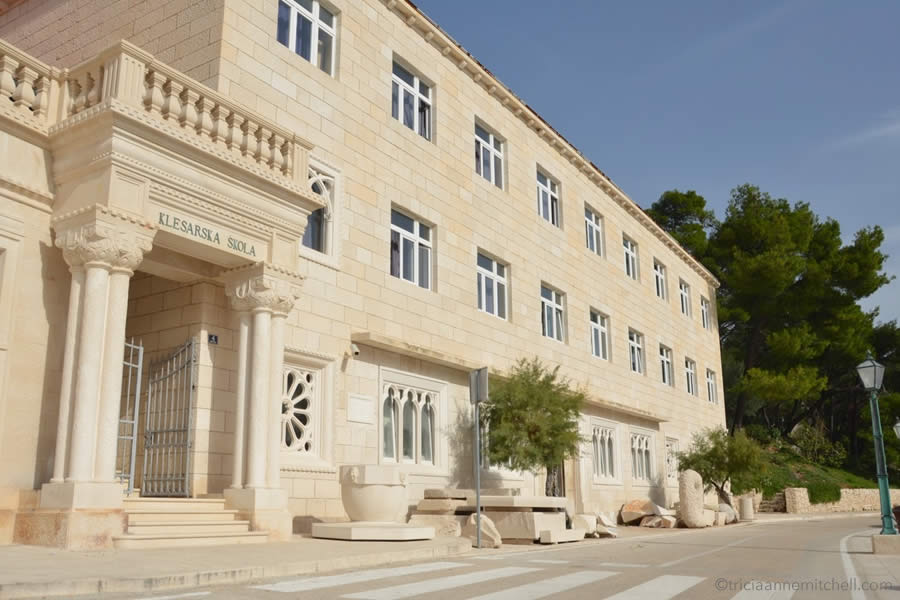
If you are fed up with dull presents, set out to Brač, visit Stonemason School or order a souvenir according to your own wishes, like candle holders, ashtrays, vases, clocks or different figurines, and hard-working Brač’s stone-masons will make everything in their power. Decorate your home with autochthonous Croatian stone which will, through the chosen souvenir, tell its story of ancient labourer’s days in the island of Brač.
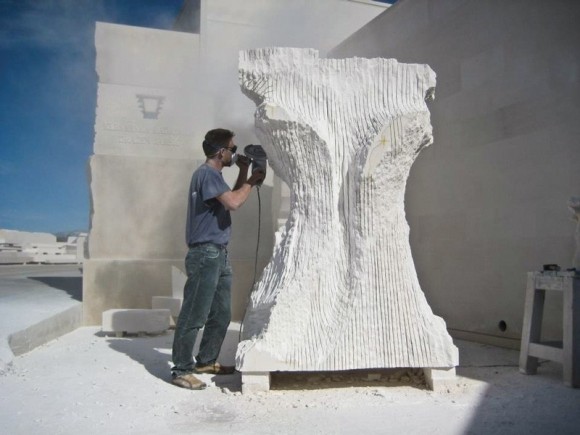
Photo: TB Split Dalmatia County
Central Dalmatia – nautical lovers heaven
Nautical tourism in Central Dalmatia
Nautical tourism is a phenomenon which has recorded one of the highest growth rates within the European and the Croatian economy over the past three decades. Croatia has exceptional prerequisites for the development of nautical tourism, as well as a series of comparative advantages over most other Mediterranean countries. This is particularly true when it comes to marinas and harbors in the area of Central Dalmatia, which keep attracting more and more sailors and boat-lovers.
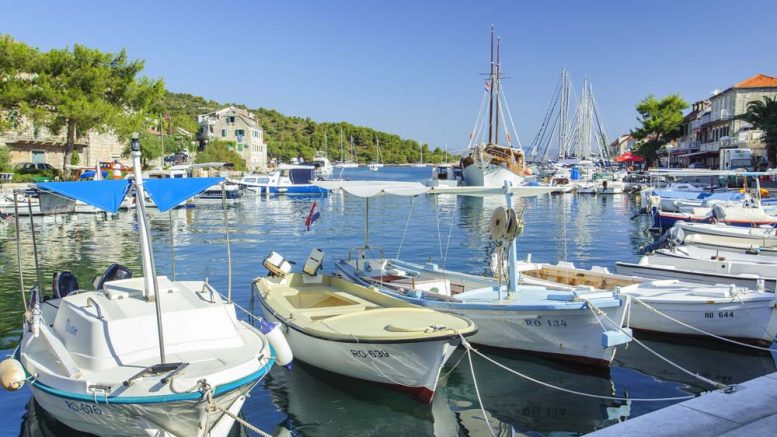
Last year’s exceptional results in nautical tourism in Split-Dalmatia County confirm this phenomenon. Apart from the excellent results achieved in the post-season, this county beat all the records related to nautical tourism in Croatia. In 2017, half of all nautical overnight stays in nautical ports and harbors were registered in this county.
For this year, yachtsmen are invited to sail to Central Dalmatian marinas and ports, which include some of the most beautiful islands on the Croatian Adriatic. Brač, Hvar, Šolta, Vis ... with its marinas, safe ports and numerous hidden coves and harbors, provide for a very attractive element for every tourist looking for a good sailing holiday.

Brač is the largest Central Dalmatian island, and Milna bay is one of the safest bays for summer charter. Its specialty is that it provides a safe shelter from all winds. Milna is the only marina on Brač which has 200 wet and 20 dry berths.
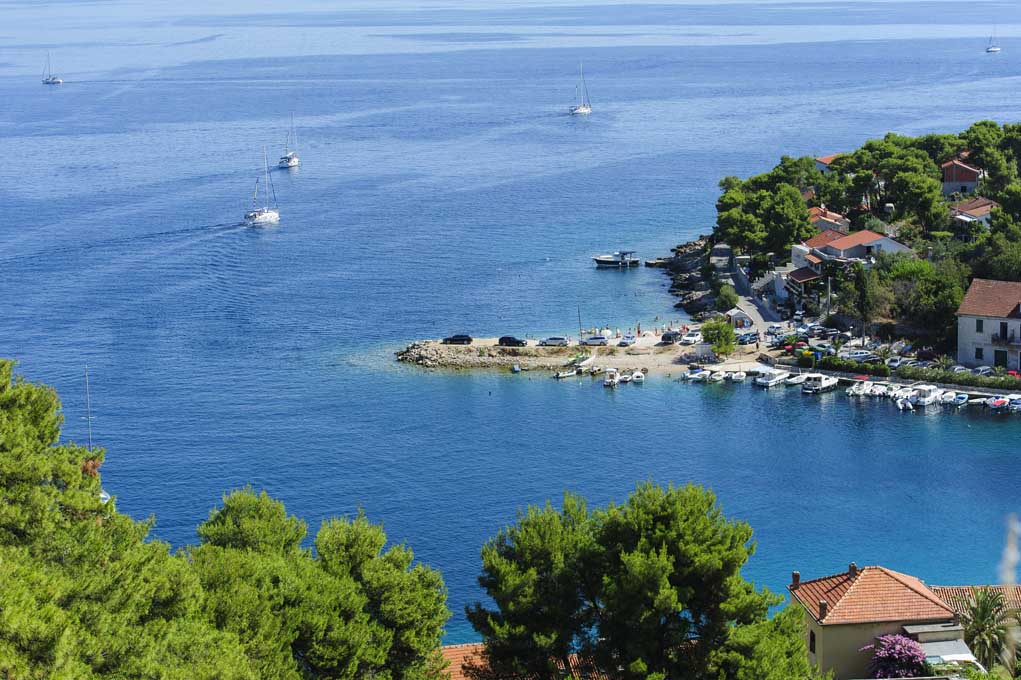
Šolta is an island in Central Dalmatia, not far from Split and west of Brač. Maslinica bay is the most visited port on the island, located on the west side. Lush forests and beautiful coves characterize that part of the island. The port has a restaurant and a hotel, in front of which is a new mooring zone for thirty boats.

Hvar is also part of Central Dalmatian islands, and today it is considered one of the 10 most beautiful islands in the world. In Stari grad, there is a marina with 40 berths. Marina in Vrboska is located on the northern side of the island and is known as a yacht charter destination. Opposite Hvar there are Paklinski Islands and Marina Palmižana, with 200 berths. The most popular and elite place is Hvar – the town’s nightlife makes it one of the most attractive destinations on the Adriatic, both for tourists and world-known celebrities.

At 45 km of distance from the coast, Vis is one of Croatia’s most set off islands. Its hidden coves and harbors are attracting more and more boat-lovers.
Drvenik Veli is an island in the waters around Split, northwest of Šolta, from which it is divided by the Šolta Channel. A marina is in construction at this very moment, which will feature 140 berths for boats up to 25 meters of length. The coast of the island includes lots of bays with sandy and pebble beaches. The main settlement is located at the deepest bay on the island. Grabula bay is of great importance to sailors, as it is the only one fully protected from all winds. On the eastern side of the island, along the islets Krknjaši, a convenient place for anchoring can be found.
Drvenik Mali is an island located about 10 nautical miles southwest of Trogir and west of the island Drvenik Veli, from which it is separated by a narrow passage called “Drvenička vrata”.

Trogir is 27 kilometers distant from Split and is located near the Kaštela Bay and Split Airport. At about a ten-minutes-walk from the old town, on the island of Čiovo, Marina Trogir is located, including 200 berths. Trogir has been under UNESCO protection since 1997.
Split is the second largest city in Croatia and is famous for the Diocletian's Palace and numerous cultural and historical sights. The Marina in Split has 350 berths and is located near the center of the old town - only a ten-minute-walk from Diocletian's Palace. This marina also welcomes charter tourists. Marina Kaštela, a large modern marina which can accommodate all sizes of boats and ships, even megayachts, is located relatively near to Split. Between Split and Šibenik lies Marina Agana, which can accommodate yachts of all sizes. It is important to emphasize that this marina offers all modern facilities and features for its visitors.

Traveling further from Split, we arrive to Podstrana and its Marina Lav, located in the very center of the sandy shore. This marina offers berths for yachts up to 30 meters, and is ideal for VIP guests. Going further south, you will reach Marina Baška Voda, which is accessible because of the proximity of Split. In this marina, boats of all sizes can be anchored. Near Makarska is Marina Podgora, with 220 berths and all the necessary amenities for yachtsmen. In Makarska town, Marina Tučepi is located, with 150 wet and 50 more dry berths.

Whether you are coming with a great yacht, boat or sailboat, if you are a professional sailor, skipper or an amateur in search of adventure, the marinas, harbors and ports of Central Dalmatia offer a perfect vacation spot for every one of you boat-lovers, and those among you who are yet to fall in love in the art of sailing.
Photo: Marinas archive, dalmatia.hr
.
7 Reasons To Visit Omiš
The town of Omiš is located on the confluence of Cetina River, one of the most beautiful canyons in Europe, bordered by steep cliffs which make the town appear as if it was carved in the mountains. The unconquerable town was once a pirate nest and had a very turbulent past, reminders of which are the remaining cultural and historical sights. A panoramic boat ride will best describe the might of the river, the cliffs and the sea. It is precisely this combination which will give you a special adrenaline experience while rafting on Cetina, taking the zip-line down the steep rocks or for the bravest ones - while kanyoning.

We recommend visiting these 7 attractions in Omiš:

1. “Fortica” fortress, originated from the 15th century, can be reached from the center of the town through Baučići settlement. The trail is good and well-marked, and it takes about an hour to reach the fortress. Fortica offers a wonderful view of Omiš, Cetina Canyon and the islands of Hvar, Brač and Šolta.

2. The 13th century Mirabela Fortress can be reached by a daring flight of stairs through the historic heart of the city. It used to be a pirate fortress, so even nowadays, various pirate souvenirs can be found at its entrance. In memory of these turbulent past times, Omiš hosts the Pirates’ Battle every year, reconstructing the actual historical battle between the Omiš pirates and the Venetians. Mirabela is also a fantastic viewpoint, overlooking Omiš and Brač Channel.

3. Saint Mihovil’s Church (Saint Michael’s) in Omiš is home of numerous artwork. The square in front of the church is often packed with tourists and locals, as during summer, many festivals, musical and cultural events are held here, including the well-known “Omiški festival” of traditional Dalmatian “klapa” singing. Klapa singing is now included in UNESCO's list of Intangible Heritage.
4. The Old Cemetery in Omiš is located east of the city center, with the oldest tomb dated from 1515. There are also Roman-era sarcophagi, and this old cemetery is definitely worth a visit during your walk along Omiš.
5. The remains of the ancient settlement Oneum were found in the zone of the settlement Baučići – the most important monuments with Roman inscriptions can be seen at the town museum. Reminders of pirate times are best presented in forms of the ships which they used, the so called “arrows from Omiš”. These were actually rowing boats that, at that time, had excellent sailing features. The Poljica Republic, an independent and autonomous administrative area, which was located on the western side of the Cetina River, from the 13th till the 19th century, left a mark in the Statute of the Republik, which can also be found in the town museum. This very statute, along with the Vinodol Book of Law, is one of the oldest Croatian historical documents, and is written in a Croatian dialect called “čakavica”.
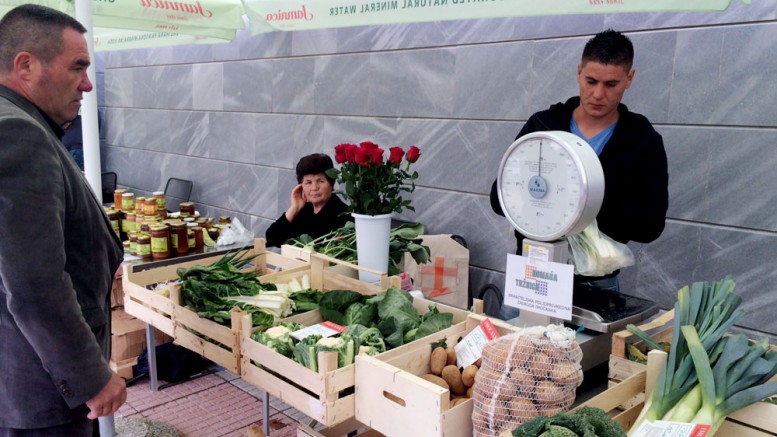
6. The market in Omiš is located nearby the main road which passes through the city. You cannot visiz Omiš and skip this "belly of the town", where you’ll find a variety of fruit & vegetables offered by locals. Tourists are attracted by nice names which locals use to in their attempts to attract buyers – you may hear them naming their products “sweeter than heaven” or “premier league material”. Fish market is also included in the same location, providing with the fresh, daily caught Adriatic fish & seafood.
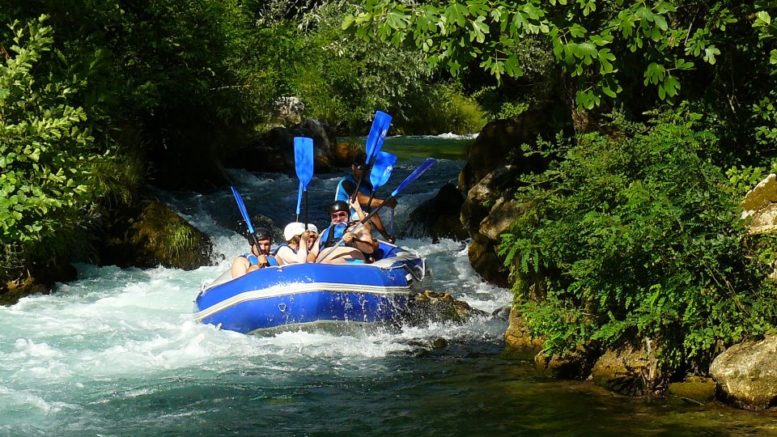
7. Rafting on Cetina River is one of the most popular activities in Omiš. This adventure starts at about 9 kilometers upstream from Radmanove mlinice, from where rafts sail down to Luka, which is the final point of your journey and a popular excursion spot. The mid ranged route is 9 kilometers long and it includes rafting on rapids and passing below a small waterfall, so it is recommended to pass this segment on foot. After rafting, you can entertain your taste buds with traditional specialties at Radmanove mlinice.
We do believe these 7 reasons are proof enough for you to pack your bags and come visit this unusual town of beautiful stone houses and streets, bordered by untouched nature and Cetina Canyon.
Photo: TB Split - dalmatia
.
7 reasons to fall in love with Trogir
After Split, Trogir is the second most visited city break destination in Central Dalmatia
During pre-season, many places in the area of Split-Dalmatia County note a significant number of visitors, including Trogir. It is a small town in Central Dalmatia, where every stone is a monument – the old town nucleus, framed by the turquoise see. Trogir was included in the UNESCO World Heritage List in 1997.
Take a walk along the streets of Trogir means to take a walk through the past and listen to stories and legends of Trogir. Greek, Roman and Venetian heritage, all combined on a small islet, make Trogir one of the most interesting historical oasis on the Adriatic. If you are on a half-hour or one-hour visit to Trogir, go directly to the old town. Visit the cathedral of Saint Lovre (Saint Laurence) and admire the magnificent church portal by master Radovan, one of the most important medieval portals in this part of Europe. Continue your visit to Ćipiko Palace, with its unique and valuable features, owned in the past by one of the most prominent Trogir families. Do not miss the Tower of Kamerlengo, which in Venetian times, represented the Governor’s Palace.

If you have a bit more time to spare, do not miss these 7 attractions. The mysterious stories among the remnants of the city walls, palaces and fortresses will be the ones to inspire you to fall in love with this charming town in the heart of Dalmatia.
1. Kamerlengo Tower
Kamerlengo tower or fortress is located in the southwestern part of Trogir. Its oldest part is the polygonal tower, built at the end of the 14th century. The fort was built in the 15th century and served to accommodate the Venetian military crew. Today, Kamerlengo is a stage for numerous theater performances and other cultural events on the open.
2. Cathedral of Saint Lovre (Saint Lawrence)
St. Lovre is one of the most beautiful cathedrals in Croatia and its construction lasted almost 300 years, completed in 1598. At the entrance of the cathedral, your attention will be caught by the breathtaking portal by master Radovan. This is one of the most important medieval portals in this part of Europe.

3. City Gate
The southern city gate or porta civitatis was built in Renaissance style in 1953 (PROVJERITI GODINU?). On its eastern side, there is a loggia intended for the stay of the passengers who arrived in the city at the time when the gates were closed - today it accommodates a gallery and a souvenir shop. On their top there is the statue of Saint Ivan of Trogir (Saint John of Trogir), patron of the town.

4. Rector's Palace
The Palace dates back to the 13th century and was restored in the 19th century in Renaissance style. It carries historical coats of Venetian rectors and other noblemen. On the door above the staircase, there is an inscription which states that access is allowed only to noblemen. The Palace also featured a theater, which was later destroyed. Today, it is home of the City Council and City Hall.
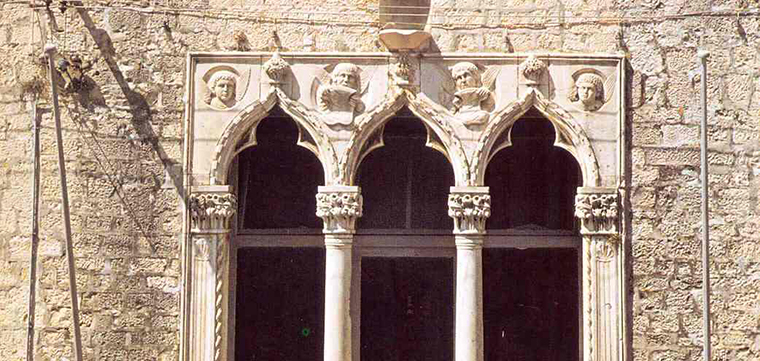
5. Ćipiko Palace
The palace of Trogir family Ćipiko is a complex of several buildings, which are a plexus of Romanesque, Gothic and Renaissance styles, connected after certain time into a unique ensemble. The largest part of the complex originates from the 13th century. The south gate of the palace is decorated with the inscription "Nosce te ipsum", meaning “get to know yourself", and there are numerous and valuable works of art within the palace.
6. The Love Tree
The fact that love is eternal and an always welcome feeling, is witnessed in Trogir by an unusual tree, which was named “the Love Tree” by the locals, because of the discreet place that its shades provide to the couples passing by. of the crown where the loving couples gathered, called the Tree of Love. Legend says that, the couple who gets to kiss under its branches, will carry their eternal love in their hearts, till death do them part.
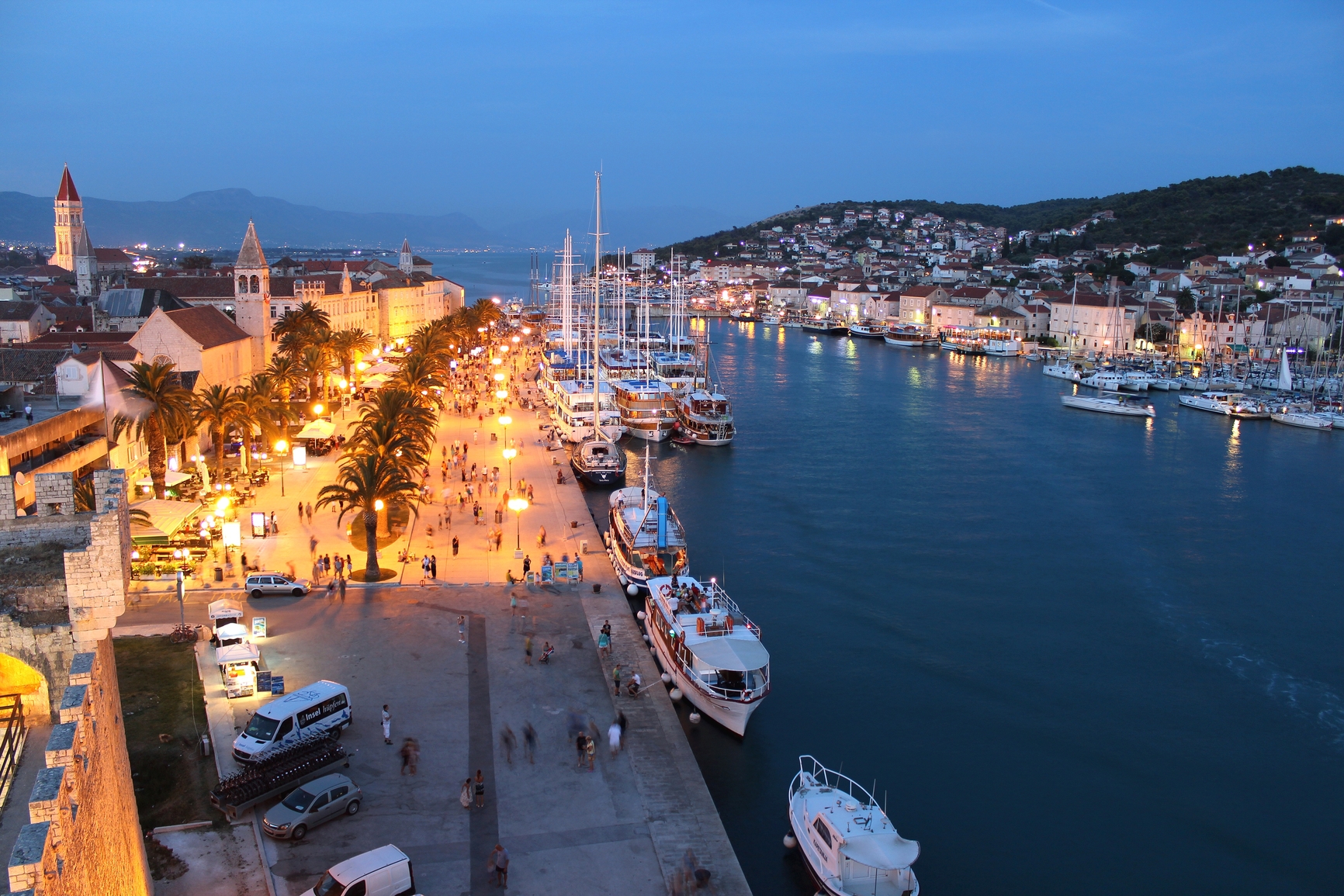
7. Trogir promenade or “riva”
Trogir's “riva” is a top promenade along the sea with, numerous facilities catering to tourists, aas well as an unique dock for yachts and megayachts.
Boom of moviemaking in Central Dalmatia!
With spring, fans of megapopular series cometh
The popularity of The Game of Thrones, a series rewarded with the 38 Emmys, is still at its peak. And this year many tourists will tour our coast looking for places where numerous scenes in the series were shot. The cellars of the ancient palace of Roman Emperor Diocletian in Split, the beautiful river landscapes of Žrnovnica, Kaštela, the green hinterland of Biokovo Natural Park rising above Baska Voda and Klis Fortress, as well as many other places filming locations are still hot fan targets. Everyone wants to be part of the filming history.
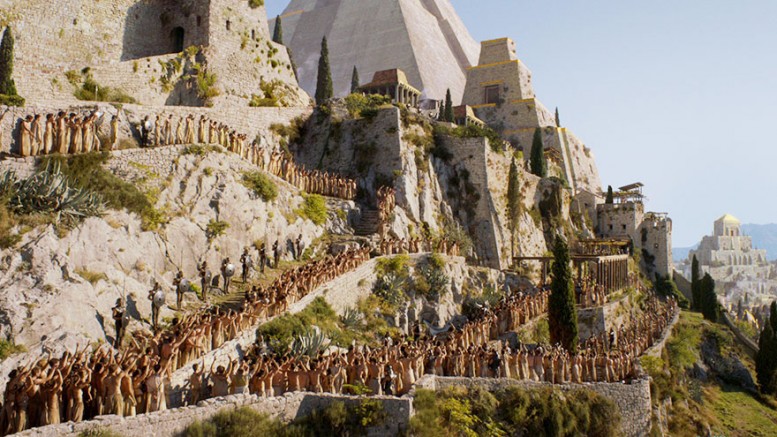
The Game of Thrones fever still runs high
Numerous travel agencies in Split and its surroundings took advantage of this very convenient moment and started a special tour of the main locations in the Dalmatian region, where scenes of the series were shot. This story has enriched an already exciting travel offer in Split & its surroundings. To tour the locations where the famous Mother of Dragons, Daenerys and her fiery flock strolled around, you will have to put some extra effort into booking your tickets!
Central Dalmatia swarms with highly attractive movie location
The coastal area as well as the array of green islands, quiet gravel beaches with the crispest of the seas on the Mediterranean, retreated under the slopes of the mountains, the green "heart" of Cetina and Jadro River valleys, is the “it” zone of the Adriatic coast, which attracted the producers of this series.

It happened to every visitor during the millennial history of Central Dalmatia – they were impressed with the views of the coves and the islands, picturesque hills and mountains, so our tourists and movie fans today experience the same - this region enchants them with the same natural beauty, as well as the rich historical heritage.


Not to forget, Salona made to the selected locations too – today it is the largest archaeological site on the eastern Adriatic coast, and it once was the capital of the Roman province of Dalmatia. The cultural heritage of Central Dalmatia was created and left into the heritage by inspired artists who engraved their art into wood, marble and stone walls of palaces in local towns.
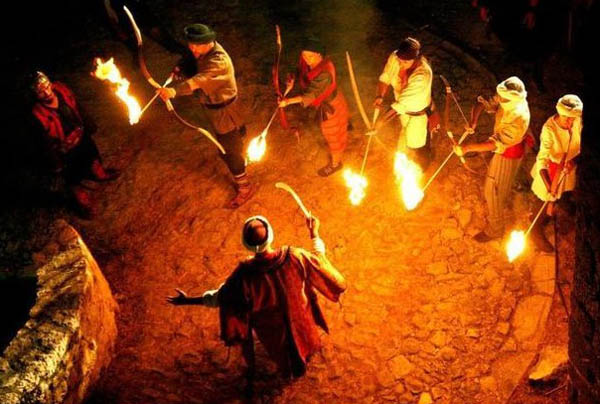
Among the famous sites included in the series we also have to mention the medieval fort of Klis, the picturesque settlement Žrnovnica, well known for its water mills, as well as Kaštela, a town settlement made of 7 smaller towns: Kaštel Sućurac, Kaštel Gomilica, Kaštel Kambelovac, Kaštel Lukšić. Kaštel Stari, Kaštel Novi and Kaštel Štafilić. Kaštel Gomilica was selected for the fourth season of the series, which features the events from the book "A Song of Ice and Fire", the third book in George R.R. Martin’s famous cycle.
Photo: TB Split - Dalmatia country, TB Stari Grad, Trogir, Klis, Solin
UNESCO’s intangible cultural heritage – ace for the cultural offer in Split-Dalmatia county
Tourist Board of Split-Dalmatia County has recognized the potential of cultural tourism as one of the priorities of tourism development strategy, to reduce seasonality and stimulate tourism activities for a larger part of the year.

Around 37% of all international travel is attributed to trips motivated by culture. With three sites included in the UNESCO’s World Heritage List, an extremely valuable and rich archaeological heritage and with the concentration of protected cultural and historical monuments, the Split-Dalmatia County is ideally positioned for the development of cultural tourism. Half of all Croatian, UNESCO-listed tangible and intangible cultural heritage properties, are located in the area of this county.

Intangible heritage includes various forms of folk and traditional cultural expressions such as language, oral literature, music, dance, games, mythology, rituals, customs and traditional crafts, as well as cultural areas or living communities in which these forms are still nurtured – hence the extreme importance to protect, present and put in service to tourism all of this valuable heritage.
Croatia proudly boasts with thirteen items included the UNESCO's list of Intangible Cultural Heritage.
Five of them are from the Split-Dalmatia County:
*agave lace as part of lacework in Croatia
*religious procession on Hvar Island named “Za Križen”
*the knight tournament “Sinjska alka”
*the traditional “silent” dance “vrličko nijemo kolo”
*a cappella singing by “klapa”

The agave lace in Croatia is made only by the nuns of the Benedictine monastery in Hvar town, and this skill has been present in Hvar since the mid-19th century. The lace is made of threads which are obtained by a special, painstaking process from the middle of the fresh agave leaves. After processing, the threads are white, fairly thin, and of a certain strength and length.

The religious procession “Za Križen” is a unique ritual of particular devotion, an expression of the religious and cultural identity of the inhabitants of the central part of the island of Hvar, which continues for five centuries and connects six island towns (Jelsa, Pitve, Vrisnik, Svirče, Vrbanj and Vrboska).

On the night from Maundy Thursday to Good Friday, processions start from six parish churches, guided by the “križonoša” – the cross bearer, carrying a cross weighing 18 kilograms. He is followed by a large number of believers and pilgrims, who stop at the churches and chapels of other villages and small towns, before they return to their parish church in the early morning hours. The procession takes eight hours and passes over 25 kilometers.

Sinjska alka is a knight tournament held in Sinj since 1717, on the first Sunday in August, to commemorate the victory over Turkish invaders, on August 14, 1715. During the competition, the rider races on the horses in gallop down the main street, aiming for the “alka” - the iron ring hanging on the rope. Tournament rules promote fair play and emphasize the importance of participating in community life. Also, Alka's participants must be members of families from the area of Sinj and Cetina area. Sinjska Alka is the only surviving example of medieval knight tournaments that were regularly held in Croatian coastal towns until the 19th century.

“Vrličko nijemo kolo” or the Silent Dance from Vrlika is unique for its performance, with no musical accompaniment or independent if such accompaniment exists (it is played by traditional “diple”, a bag-pipe-typed instrument, or by a specific way of singing in small groups by "shaking" the voice – “rera”, “ganga”, “ojkavica”).

It is performed in a round – in a “kolo”, only in the area of Dalmatian hinterland, but it can also be broken into pairs or performed during the entire dance in pairs, which are moving freely in the “kolo” or the dance area.

Klapa singing is a traditional polyphonic a cappella singing, without accompanying instruments. The tradition of klapa and klapa songs which we know today was formed in the mid-19th century, at the time when the cultural and musical identities of Mediterranean towns on our coast and islands, especially in Dalmatia, were profiled. The oldest model of klapa, the folk klapa, is an informal group of singers who occasionally sing to satisfy their love of singing, more than anything else. Tradition of oral expression, the simplicity of musical expression and spontaneous singing are part of the main features of this model of klapa. During the last decades, klapa singing has seen great changes and has gained great popularity even outside Dalmatia, the fatherland of klapa singing.
Photo: TB Split Dalmatia County, TB Stari Grad, TB Vrlika, TB Sinj
Exhibition of Roman roads of Central Dalmatia in Archaeological Museum in Zagreb!
Old ancient roads of Central Dalmatia hide remains of old-Christian necropolis, Roman camps, sacral buildings and numerous remains of fortification facilities
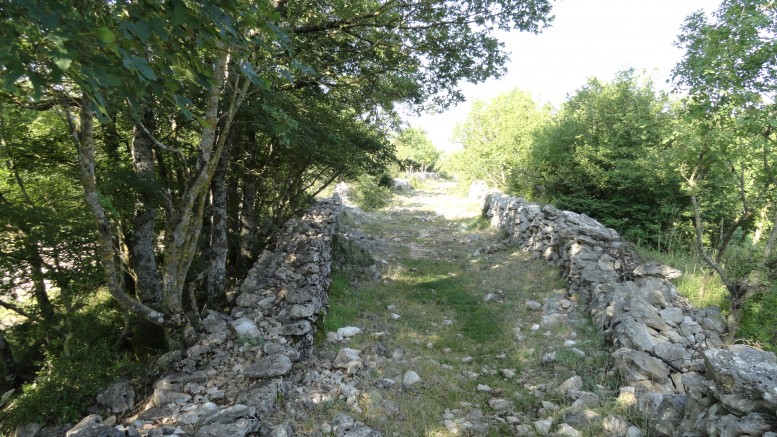
One doesn’t need to travel to Rome to see Roman roads – this is proven by restored Roman roads of Central Dalmatia – for tourist purpose. All those interested in history, archaeology or those who are simply of curious nature and want to know how it all looked like in ancient and Roman times, when soldiers of Roman legions, but ordinary travellers as well, passed through this area where we are today, should visit remains of Roman roads in Split-Dalmatia County.

To save all this from oblivion, in 2012 Joška Stella, director of Tourist Board of Split-Dalmatia County and Lino Ursić, county’s external associate, especially on projects of archaeological tourism, started a project named Roman roads of Central Dalmatia. The project has spread outside the borders of the County and set out to Zagreb, where the exhibition will be held on April 6 in Archaeological Museum. This way our capital’s residents and tourists will have the opportunity to get familiar with this significant part of Dalmatian, but Croatian history as well.
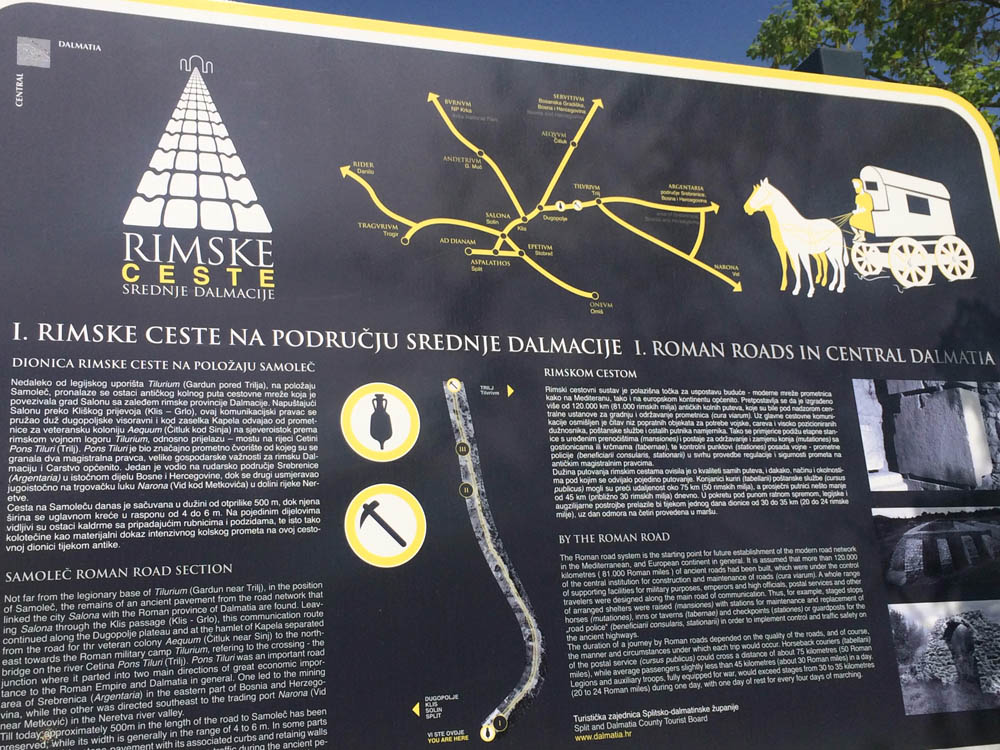
A trip back in time starts in Salona, which is together with Diocletian’s palace one of ancient jewels of this area. Preserved remains of Roman roads are located throughout Split hinterland, like military road Salona– Klis-Andetrium – today’s Gornji Muć and road of new conquests and borders Salona – Klis, Dugopolje – Dicmo – Aequum (Čitluk) and Servitium – a place where First Pannonian Fleet had its quarters, presumably on the Sava River.
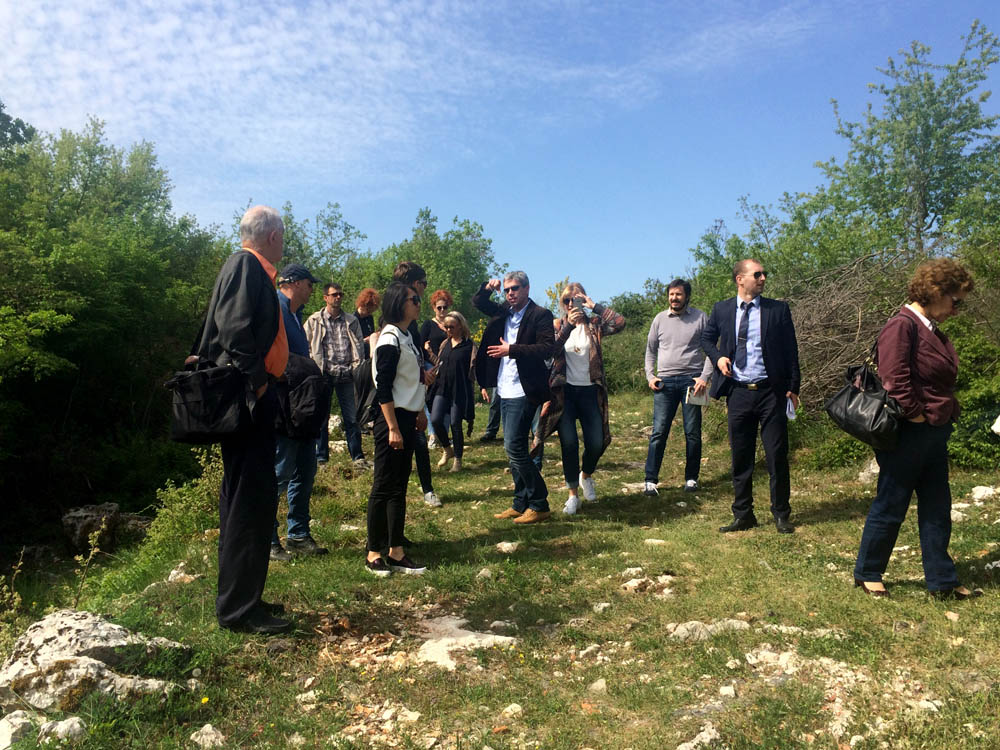
A trip back in time starts in Salona, which is together with Diocletian’s palace one of ancient jewels of this area. Preserved remains of Roman roads are located throughout Split hinterland, like military road Salona– Klis-Andetrium – today’s Gornji Muć and road of new conquests and borders Salona – Klis, Dugopolje – Dicmo – Aequum (Čitluk) and Servitium – a place where First Pannonian Fleet had its quarters, presumably on the Sava River.
Photo: dalmatia.hr
Natural phenomenon of Dalmatian Zagora – Red and Blue Lake to become UNESCO Geopark in 2020!
Soon another UNESCO geopark in Croatia!
Central Dalmatia abounds in cultural attractions, surreally beautiful landscapes and exquisite gastronomy. With its long history and tales which are woven into every rock, it is ideal destination for relaxation, entertainment and active vacation.
Spring is the most beautiful time of the year in Dalmatian hinterland, when numerous tourists and nature enthusiasts visit magical lakes, forests and mountains, ancient remains, cold caves and nature parks. It is up to you, dear readers, to explore incredible spectre of possibilities, according to your own wishes and possibilities.
During your peregrination across Dalmatian Zagora, do not miss to visit world-famous natural phenomena. Imotski’s Red and Blue Lakes are natural values of global significance. These protected natural monuments have circled the world with their beauty. Blue Lake is favourite excursion site of both foreign and domestic guests in search for a holiday in nature and atypical beach fun. Karst Blue Lake is one of the most beautiful Croatian lakes approachable by nicely arranged stairs, so it is a favourite bathing spot during summer.
When the lake dries up, then witty residents traditionally play football at its bottom. Red Lake was named after red rocks on its edge. It is, unfortunately, impossible to approach due to high steep slopes surrounding it. This karst pit is 528 metres high, while the depth of the lake is around 281 metres, so according to certain data, it could be the deepest lake in Europe.
In Imotski town initiative has been launched to turn one of the region’s most popular natural attractions into a UNESCO protected park, a so-called Global Geopark. Project of building a centre with various contents for visitors and researchers is being prepared. The study of Red Lake, a karst phenomenon that attracts adrenaline enthusiasts from all over the world, continues as well.
Documentation for application is being prepared. After that, in 2019, follows necessary marking, signalization and implementation arrangements. If everything works out well, in June 2020 Red and Blue Lake will obtain a status of UNESCO geopark.
This would be the third geopark in Croatia, Nature park Papuk is UNESCO protected geopark, while UNESCO’s protection of Vis archipelago as geopark is expected to be approved soon.

Photo: dalmatia.hr
4. International historic cities congress in Solin
Meet, share&build
On behalf of the Tourist board of the city of Solin, the hotel President Solin and the city of Solin, it is our great pleasure to welcome you to the „4th. International Historic Cities Congress“.
4th International Historic Cities Congress is first project with that concept, organized in Croatia, under the motto „Meet, share& build“ , which aims to motivate ideas exchange („Meet“ concept) between leaders in tourism industry of historic cities, tourist boards, archaeologists and travel agent representatives.
The share of experiences („Share“ concept) is another objective as well as development of the new tourism products and arrangements by joint engagement of the tourism industry leaders in the destinations („Build“ concept).

In regards to the archaeological park Salona and its status in ancient history, we believe to be the perfect host of this event and we trust you will enjoy the programme we have prepared. This project is financed by European union through INTERREG IPA cross border cooperation Croatia- Bosnia and Herzegovina-Monte Negro 2014-2020 (project RiTour).
https://www.youtube.com/watch?v=ngSIp0sGy_M
Project is supported and sponsored by: The President of the Republic of Croatia, Mrs. Kolinda Grabar Kitarović, Ministry of Culture, Ministry of Tourism, Croatian national tourist board, Tourist board of the Split-Dalmatia County, Split-Dalmatian County, Croatian national chamber association, Croatian association of historic cities, Wüstenrot building society, Perfecta travel agency, Lavanda tourist group, Public cultural institution Zvonimir, City of Split tourist board, City of Split museum, Archaeological Museum Split, Klis tourist board and Klis municipality. We would like to take the opportunity and thank them all for their assistance, support and recognition of this project.

The topic of congress is preservation and intepretation of historic attractions and localities in historic cities throughout Croatia through benchmarking with cities from abroad. Historic periods covered throughout this congress range from prehistoric times to roman times and middle ages.
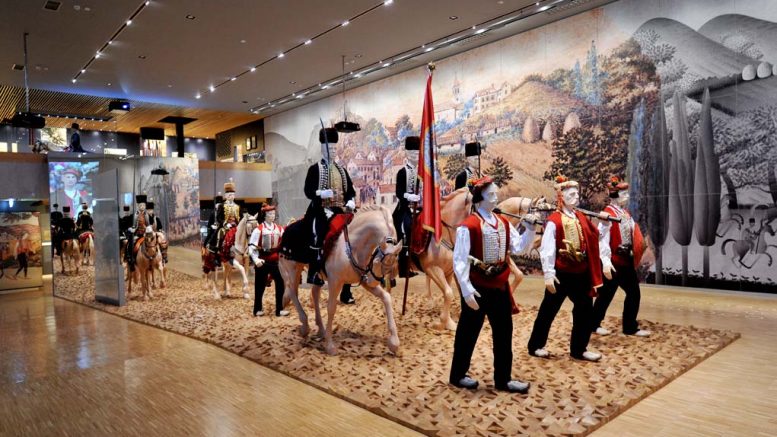
Our aim is to present cities both from Croatia and abroad from these historic periods, with the emphasis on destination management, in terms of the creative and interpretative presentation of historic sites. The congress gathers professional lecturers from tourism and archaeological profession including Department of Antiquities from Jordan, Italian national tourist board, city of Krakow, tourist board of Ljubljana, representatives of touroperators from Egypt, city of Mostar, Cultural institutions and assocations from Šibenik, Omiš, Solin and Istria and Tourist board of Zagreb.
Apart from lectures, panel discussion will be held on the Education in culture and tourism. Panelists will be professionals from educational and government institutions, employment agency and Ministry of tourism.
We are pleased to state that 2nd year in row, within the congress, the cultural tourism award Plautilla for quality and innovation in management of historic cities will be assigned in three categories:
- BEST cultural tourism product
The award is given to those tourist associations / institutions / companies / crafts etc. with the best tourist product which is characterized by high quality and creative interpretation of cultural and historical heritage. - HISTORICAL TOWN / SITE / FOUNDATION
The award is given to those cities / localities / institutions that have made significant effort in protection and preservation of cultural and historical heritage. - THE BEST CULTURAL TOURISM ITINERARY
The award is given for itineraries with a high quality in interpretation and presentation of cultural and historical heritage of the city or region, and may relate to day trips, or seven-day city break programs.
More info on conditions and application at web page: http://ihc-congress.com/awards/
Since the congress is financed by European Union, the application for congress is free of charge. All information about applications and programme may be found on the congress web page: http://ihc-congress.com/home/
Due to the limited number of participants, please be aware the applicaton should be done as earlier as possible, but not later than March 5th 2018.
We trust your stay will be full of interactions, new knowledge and ideas and will meet your expectations to the fullest extent.
We wish you a warm welcome to Solin, the cradle of ancient and Croatian history.

INTERNATIONAL HISTORIC CITIES CONGRESS
20.-23.03.2018. HOTEL PRESIDENT SOLIN*****
PROGRAMME
Tuesday 20.03.2018.
Arrival
17:00h-19:00h – Registration
19:00h-20:00h – Welcome drink
20:00h-21:00h – Dinner
Wednesday 21.03.2018.
08:00h-08:45h – Registration
08:45h-09:00h – Welcome speech
09:00h-12:10h – Lectures
09:00h-09:25h – Asma Shhaltoug, Head of Engineering and Conservation Directorate, Department of Antiquities, Jordan
Topic: Protection and presentation of cultural heritage of Jordan: New perspectives
09:30h-09:55h – Andrea Colonnelli, Travel trade department and market reserach, Italian national tourist board, Italy
Topic: Italy's historical heritage and cultural tourism
10:00h-10:25 - Andrzej Czaplinski, Department of promotion and tourism, City administration Krakow, Poland
Topic: Presentation and Interpretation of the cultural heritage of Krakow
10:30h - 10:45h – Coffee break
10:45h-11:10h – Mitja Predovnik, assistant managing director, Tourist board Ljubljana. Slovenia
Topic: Strategy of cultural tourism in Ljubljana
11:15h-11:40h – Jakov Vetma, mayor, Municipality of Klis/President of Croatian association of historic cities
Topic: Revalorization of Klis cultural heritage
11:45h-12:10h – Karim Mohsen, Managing Director/Chairman of the Egyptian Tourism Federation, Sylvia Tours, Egypt
Topic: Challenges and experiences in creating and selling cultural and tourism products
12:10h-12:30h – Coffee break
12:30h-14:00 – Panel discusion
Topic: EDUCATION IN CULTURE AND TOURISM
Moderator: Željko Trezner, struč.spec.oec., Vice dean, ASPIRA college
1) Nansi Ivanišević, Director of Department for Education, Culture, Sports, Information and Technical Culture, State Administration Office in Split, Dalmatian County
2) Lidija Petrić, prof. dr.sc., Department of Economics of the National Economy, University of Split, Faculty of Economics Split
3) Tonči Glavina, State Secretary, Ministry of Tourism
4) Zvjezdana Jaman, head of the office of Solin, Croatian Employment Service
5) Helena Cvikl, director, College for Hospitality and Tourism Maribor/Vicepresident of EURHODIP
6) Renata Nevidal, director Carlson Wagonlit Travel, president of Cultural tourism board, Croatian chamber of commerce
14:00h-15:00h – Lunch break
15:00h-17:30h – Included excursion Solin and Klis (Ancient Salona and fortress Klis)
17:30h-19:00h – Free time
19:00h-20:00h – Dinner
20:00h-21:30h – Entertainment – Karaoke party
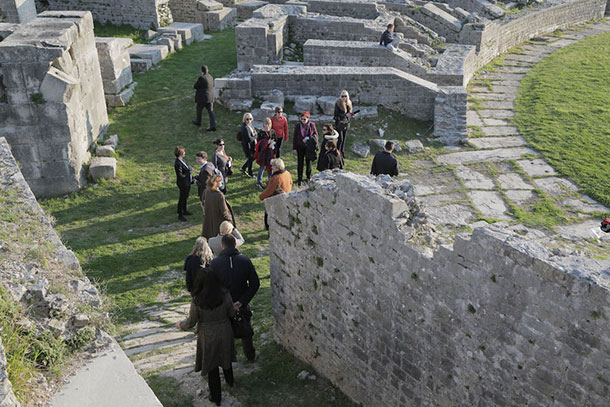
Thursday 22.03.2018.
09:00h-12:10h – Lectures
09:00h-09:25h – Ivana Mahnić, Expert Assistant/Product Development Department, Zagreb Tourist Board
Topic: Advent in Zagreb
09:30h-09:55h – Gorana Bačelić – Barišić, Director, Public institution in culture – cultural fortress Šibenik
Topic: Development of cultural tourism in the city of Šibenik - revitalization of cultural heritage
10:00h-10:25h – Admira Čustović, Tourism advisor , city of Mostar, Bosnia and Herzegovina
Topic: City of Mostar - presentation and protection of cultural heritage
10:30h-10:55h –Ana Brničević/Mladen Tomić, Director of Tourism council, Society of Poljica
Topic: Old Poljica principality as a contemporary tourist destination
11:00h-11:15h – Coffee break
11:15h-11:40h – Darko Komšo, Director, Archaeological museum of Istria
Topic: Management, protection and presentation of Pula archeological heritage
11:45h-12:10h – Mario Matijević – Public institution in culture Zvonimir, Solin
Topic: Old croatian heritage of Solin – opportunities and threats in protection and interpretation
12:10h-14:00h – Lunch break
14:00h-17:00h – Included excursion Split (Diocletian palace, City museum)
17:00h-19:00h – Free time
19:00h-20:00h – Award ceremony
20:00h-22:00h – Gala dinner
Friday 23.03.2018.
08:00h-11:00h - Optional excursions (Trogir, Omiš)
Departure
Photo: TB Solin


